#❀ ˚ ↬ newman carol : visuals.
Explore tagged Tumblr posts
Text

ღ * ➜ ( sarah shahi , cisfemale , forty-three , she/her ) it seems like carol newman might be making a new home in mystic, connecticut. a canon character from disney's the santa clause(s) , carol was seen walking down main street. while they arrived twelve weeks ago , they do not believe they have been here their whole lives.
❀ ˚ ↬ full name : carol newman-calvin, mrs. claus
❀ ˚ ↬ relationships : charlie calvin ( step-son ), buddy calvin-claus & sandra calvin-claus ( npc son & daughter )
❀ ˚ ↬ sexuality : heterosexual
❀ ˚ ↬ shipping : closed, scott calvin
❀ ˚ ↬ occupation : high school principal
#❀ ˚ ↬ newman carol : relationships.#❀ ˚ ↬ newman carol : musings.#❀ ˚ ↬ newman carol : visuals.#❀ ˚ ↬ newman carol : answers.#❀ ˚ ↬ newman carol : interactions.#❀ ˚ ↬ mun : introductions.
0 notes
Text

[ sarah shahi ] i just saw that CAROL NEWMAN (MRS. CLAUS) arrived in mystic, ct ! they're FORTY-THREE and a CANON character from THE SANTA CLAUSE(S). however, you might want to check first because while they've been here TWELVE WEEKS they DO NOT BELIEVE they have been here their whole lives. make sure to make them feel right at home.
#✦ ↬ carol newman : canon#✦ ↬ carol newman : visuals#✦ ↬ carol newman : musings#✦ ↬ carol newman : answers#✦ ↬ carol newman : interactions
1 note
·
View note
Text
The eccentric new manager of a UHF television channel tries to save the station from financial ruin with an odd array of programming. Credits: TheMovieDb. Film Cast: George Newman: ‘Weird Al’ Yankovic R.J. Fletcher: Kevin McCarthy Stanley Spadowski: Michael Richards Bob: David Bowe Harvey Bilchik: Stanley Brock Philo: Anthony Geary Raul Hernandez: Trinidad Silva Kuni: Gedde Watanabe Noodles MacIntosh: Billy Barty Richard Fletcher: John Paragon Pamela Finklestein: Fran Drescher Esther Bilchik: Sue Ane Langdon Head Thug: David Proval Killer Thug: Grant James Teri: Victoria Jackson Joe Earley: Emo Philips Gandhi: Jay Levey Cameraman: Lou B. Washington Bum: Vance Colvig FCC Man: Nik Hagler Bartender: Robert K. Weiss Spatula Husband: Eldon G. Hallum Spatula Wife: Sherry Engstrom Spatula Neighbor: Sara Allen Sy Greenblum: Bob Hungerford Crazy Ernie: John Cadenhead Blind Man: Francis M. Carlson Earl Ramsey: Ivan Green Joel Miller: Adam Maras Billy: Travis Knight Little Weasel: Joseph Witt Teri’s Father: Tony Frank Teri’s Mother: Billie Lee Thrash Fletcher Cronie #1: Barry Friedman Fletcher Cronie #2: Kevin Roden Phyllis Weaver: Lisa R. Stefanic Big Edna: Nancy Johnson Betty: Debbie Mathieu Little Old Lady: Wilma Jeanne Cummins Animal Deliveyman: Cliff Stephens Band: Guitar: Jim West Band: Bass Guitar: Steve Jay Band: Drums: Jon Schwartz Band: Keyboards: Kim Bullard Whipped Cream Eater: Barry Hansen Thug #3: Bob Maras Thug #4: George Fisher Guide #1: Tony Salome Guide #2: Joe Restivo Yodeler: Charles Marsh Mud Wrestler: Belinda Bauer Satan: Patrick Thomas O’Brien Conan the Librarian: Roger Callard Timid Man: Robert Frank Boy with Books: Jeff Maynard Promo Announcer (voice): M.G. Kelly Promo Announcer (voice): Jay Gardner Promo Announcer (voice): John Harlan Promo Announcer (voice): Jim Rose Film Crew: Production Manager: Gray Frederickson Original Music Composer: John Du Prez Editor: Dennis M. O’Connor Producer: Gene Kirkwood Producer: John W. Hyde Writer: Jay Levey Director of Photography: David Lewis Production Design: Ward Preston Set Decoration: Robert L. Zilliox Costume Design: Tom McKinley Makeup Effects: Allan A. Apone Special Effects Makeup Artist: Douglas J. White Sound Recordist: Ara Ashjian Sound Editor: Christopher Assells Sound Editor: Charles R. Beith Jr. Sound Recordist: Gregory Cheever Sound Editor: Clayton Collins Sound Re-Recording Mixer: Andy D’Addario Sound Editor: Dino DiMuro Sound Editor: G. Michael Graham Sound Re-Recording Mixer: Jeffrey J. Haboush Sound Mixer: Bo Harwood Sound Editor: Dan Hegeman Sound Editor: A. David Marshall Sound Editor: Diane Marshall Supervising Sound Editor: Dave McMoyler Sound Recordist: Art Schiro Sound Editor: Scott A. Tinsley Visual Effects Producer: John Coats Visual Effects Supervisor: William Mesa Visual Effects Art Director: Richard Kilroy Visual Effects Art Director: Ron Yates Post Production Supervisor: Susan Zwerman Production Supervisor: Bill Carroll Stunt Coordinator: George Fisher Stunts: Bob Maras Stunts: Brent Stice Stunts: T. Alan Kelly Stunts: J. Granville Moulder Stunts: Michael Steven Howl Stunts: Richard Drown Executive In Charge Of Production: Kate Morris Associate Producer: Becki Cross Trujillo Associate Producer: Joe M. Aguilar First Assistant Director: John R. Woodward Second Assistant Director: Benita Allen Casting Assistant: Gregory Raich Casting Assistant: Sandi Black Local Casting: Barbara Brinkley Henry Local Casting: Laurey Lummus Key Hair Stylist: Lynne K. Eagan Makeup & Hair: Roseanne McIlvane Wardrobe Supervisor: Ainslee Colt de Wolf Wardrobe Assistant: Phil O’Nan Boom Operator: Joel Racheff First Assistant Camera: Ed Giovanni Second Assistant Camera: Tiffanie Winton Second Assistant Camera: Brett Reynolds Second Assistant Camera: Cindi Pusheck Production Coordinator: Bonnie Macker Script Supervisor: Carol Stewart Second Second Assistant Director: Lorene M. Duran Third Assistant Director: Pam Whorton Additional Editing: Steve Polivka Assistant Editor: Lewis Schoenbrun Supervising ADR Editor: Karla Caldwell Music Supervisor:...
0 notes
Text
February 24, 2021: Annie Hall (1977) (Part 1)
Well...Woody Allen.

I, uh...OK, look, I could get into the whole Woody Allen thing, but INSTEAD of me doing that, I’ll just say this: look into it. Because there is a LOT on this subject, and it’s controversial as HELL. At the end of the day, I’ll recommend this upcoming series on HBO, and just recommend that you look into it.
Because, uh...yeah, it’s not great. That’s all I’m gonna say, because I need to educate myself on it more as well. Instead, let’s talk for a few seconds about divorcing the art from the artist. But ONLY for a few seconds.
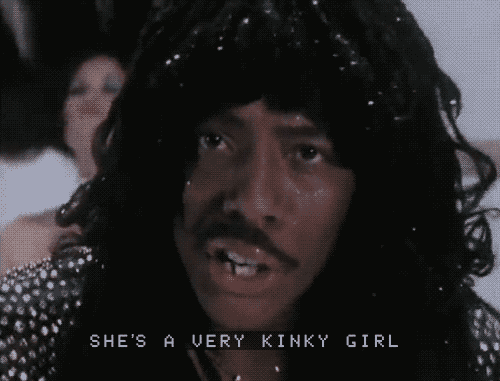
I understand why some of you might be surprised I’m doing this one. Because, again...Woody Allen. But, yeah, I always try to do my best to divorce the art from the artist. Because some people suck, but they still make nice things, or at the very least, things that should be open to interpretation and appreciation.
“Superfreak” is a classic song of 1981, and everybody’s heard at least some of it, but Rick James fuckin’ kidnapped two women and kept them in his basement, WHERE HE TORTURED THEM. Edgar Degas made beautiful paintings of ballet dancers, and was also A MASSIVE ANTI-SEMITE. And before he was (RIGHTFULLY AND JUSTIFIABLY) outed as a roofie-ing piece-o-shit...I grew up with - and genuinely enjoyed - this guy’s comedy.

And you can judge me for this, but...I still think his stand-up was and is genuinely funny, and I still appreciate the cultural impact that The Cosby Show had on society’s perception of African-American families, divorced from the stereotype of the ghetto. Fact of the matter is, works themselves deserve to be separated from the artist who made them. That’s my philosophy, and I’m sticking with it Entirely fine to disagree with me, by the way, I get it.
But in that spirit, I’m watching Annie Hall, despite its creators likely transgressions. After all, this is technically his magnum opus, and it’s a good look into the man himself. And so, with that in mind: Annie Hall! SPOILERS AHEAD!!!
Recap (1/2)
youtube
Alvy Singer (Woody Allen) is talking directly to us about his outlook on life, and his view on the potential future. He tells half of a joke, then an amusing anecdote, and a bit more until telling us that he’s broke up with Annie, and he’s still thinking about it, trying to figure out exactly where things went wrong. He goes back to the beginning, which is punctuated with flashbacks.
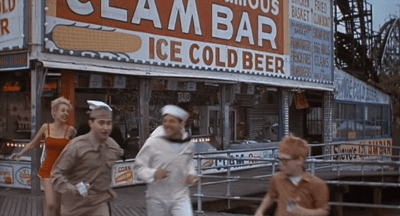
He grew up in Brooklyn in World War II, and a young Alvy (Jonathan Munk) is with his mother (Joan Newman) at the doctor’s. He’s depressed after learning that the universe will one day end after a period of expansion, and is having his first real existential crisis. I had mine around the same age, actually, went I learned that the Earth will one day get swallowed by the sun. And THEN came the realization that I’d be dead by that point. AND THEN came the realization that I’d die one day, and that was a WHOLE NEW crisis to...anyway.
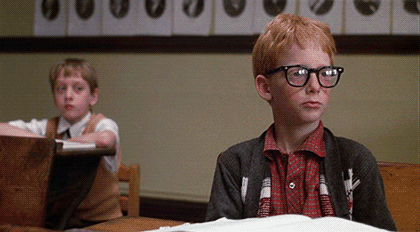
He grew up under the Coney Island rollercoaster according to him (although his analyst says that he exaggerates), and that’s what he blames for his “nervous personality. He’s also got an active imagination, often blurring fantasy and reality. His Dad ran the bumper cars on Coney Island (a place that I’ve never been, but desperately want to go).
He continues on talking about his former schoolmates, and not really that well. While in class, young Alvy kisses a...little girl...ahem. And then, when reprimanded by the teacher, current Alvy notes that he was always...like that...and he also says this to the little girl, and they talk about Freud’s latency period, and Alvy said he never...had...one...that’s uh...that’s fuckin’ SOMETHING, now isn’t it?
OK, well, shoving that forcefully aside as hard as I can, Alvy wonders aloud on where his classmates now, and one of them says this:
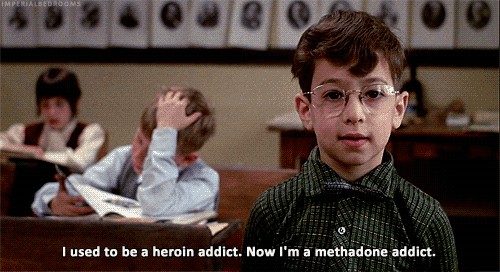
This also involves a little girl saying she’s “into leather,” which is...awkward as FUCK, but WE’RE GONNA MOVE THE FUCK ON. Alvy recounts his paranoia, and was so even after he became a famous comedian (which we say after a VERY good joke about qualifying for the army as a hostage). He speaks to a friend, Rob (Tony Roberts) about potential anti-Semitism from a person in a passersby meeting, then heads to meet Annie.
Annie Hall (Diane Keaton) arrives at a movie theater, late and in a bad mood. The two are late to their intended film, argue briefly, then head to another film that they’ve already seen, The Sorrow and the Pity. In line, they’re in front of a man loudly soliloquizing on film, much to Alvy’s annoyance.
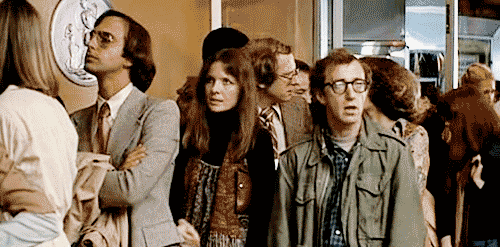
Annie and Alvy continue to argue a bit, while Alvy openly berates the casual film critic. In the middle, he talks to the audience about it, only to be followed by the crtiic himself, who also acknowledges the audience! Huh! Anyway, he’s a professor at Columbia, and starts continuing his line speech, this time on the work of Marshall McLuhan, one of the most important early media theorists ever. And then, Alvy brings out Marshall McLuhan (Marshall McLuhan) to debate him on it, only for Alvy to turn to the audience and wish aloud that life could really be like this!
I’m beginning to understand why people like this film. It’s metacontextual before metacontextuality was really a thing in film. It’s a fourth-wall breaking movie in some fantastic ways. But will it still hold its muster after breaking the fourth wall’s become so commonplace? we’ll see, I guess.

After a showing of the film, the two return home, and Alvy tries to initiate sex. But Annie’s not really into it at the moment, and Alvy complains that they used to have sex all the time, and it’s been a while since. So, I guess that retroactively awkward scene at the school was meant to foreshadow Alvy’s high libido, that will probably cause some conflict in the film. Anyway, Annie notes that Alvy once went through something similar with Allison, his first wife. Who’s Allison? Flashback!
Allison Portchnik (Carol Kane) is a graduate student in political science, working for a campaign that Alvy’s about to perform for. He’s nervous, as he’s going on after another comedian. She comforts him by saying that she thought he was cute, and he does well. But we flash-forward to a night after they’re married, shortly after the death of JFK, which Alvy’s obsessing over, entertaining various conspiracy theories.
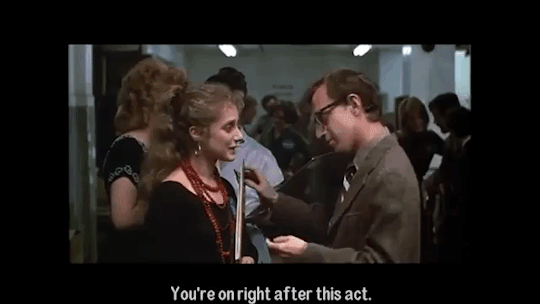
However, Allison rightly points out that his obsession is simply a way for him to avoid having sex with her, which mirrors the present-day situation him him and Annie. Flash forward TO Alvy and Annie, and there are just lobsters...everywhere, on the floor in their kitchen. After that commotion, they talk about Annie’s past romances.
And by talk about, I mean they LITERALLY WALK THROUGH her memories. And I gotta say...I fuckin’ love this method of storytelling. One of her previous boyfriends is an actor (John Glover), and his over-dramatic prose sickens Alvy. We see a second marriage of Alvy’s to New Yorker writer Robin (Janet Margolin), who’s dragged him to a stuffy high society party of intellectuals that he has no interest in going to. Same her, Alvy. I bet the caviar’s canned.

He tries to initiate sex with her - in the middle of the party, mind you - and she turns him down. later, when they get to it in their apartment, she’s unable to, uh...reach satisfaction. From there, we flash-forward after that marriage ends to a tennis match with Rob, where he meets one of his mutual friends: Annie Hall.
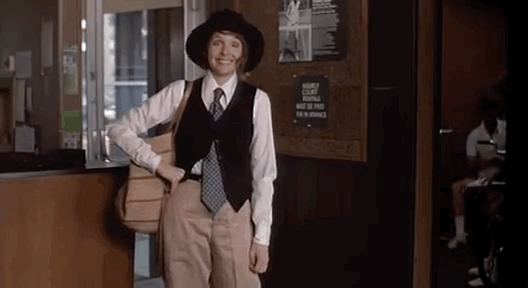
And for the record, Annie’s pretty obviously got a crush on him, and she’s adorable as fuck. Also, that outfit, real talk...that outfit rules. She offers to give Alvy a list, during which he’s quite worried about her driving, but the two still get along well enough. Annie’s an amateur photographer, during a time period where photography is considered a relatively new art form. The two go to her apartment, and share familial anecdotes and personal stories about themselves. And as they talk, we also see a set of subtitles on top of each of them that betray their inner feelings and thoughts.
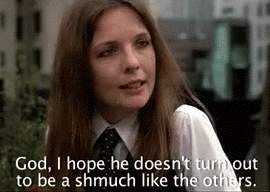
I do genuinely like the stylings of the movie, goddamn. This conversation leads to Alvy asking her out on a date, although they end up scheduling it after Annie auditions at a nightclub as a singer. And while it doesn’t go great, Alvy tells her she was fantastic, and they share a kiss before they head to dinner. They head to her place afterwards, and we cut to later that night, post-coitus.
And then, we get a flash-forward back to the next day, where the two are at a bookstore, and Alvy speaks on his personal philosophy of life.
I'm obsessed with uh, with death, I think. Big - big subject with me, yeah. I have a very pessimistic view of life. You should know this about me if we're gonna go out. You know, I - I feel that life is - is divided up into the horrible and the miserable. Those are the two categories, you know. The - the horrible would be like, um, I don't know, terminal cases, you know, and blind people, crippled. I don't know how they get through life. It's amazing to me. You know, and the miserable is everyone else. That's - that's - so - so - when you go through life - you should be thankful that you're miserable because you're very lucky to be miserable.
Iiiiinteresting.
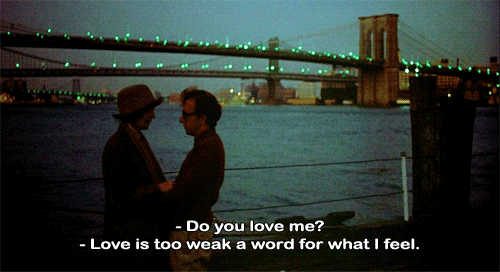
Shortly into their relationship, they admit they’re in love (or “lurve”, as Alvy says). She moves in with Alvy, which he initially isn’t the biggest fan of, having been burned in two previous marriages And already, their relationship is showing a few bumps. Alvy’s also always trying to push her to take college classes, while she uses mariuana whenever they have sex, which Alvy doesn’t agree with.
But as they have sex one night, without the marijuana at Alvy’s urging, Annie’s mind wanders - LITERALLY.
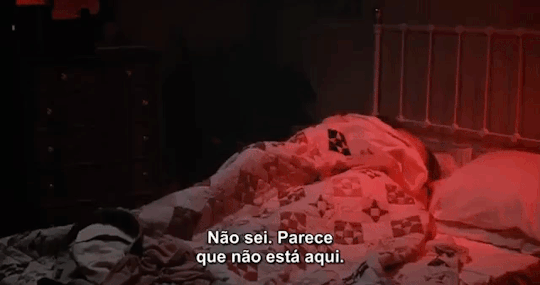
This film...this film has a VERY unique style of visual storytelling, and I am HERE for it! Seriously, I genuinely love this method of storytelling and comedy, it’s extremely engaging to me.
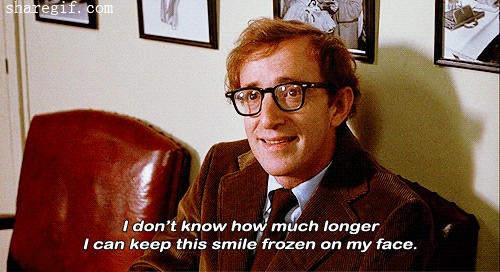
Soon enough, Alvy gets an interview to write for a talk show host, which he ABSOLUTELY despises. But in doing so, he decides to go into stand-up for himself, and is actually quite successful at it! But before we get to that, we’re at the halfway point! See you in Part 2!
#annie hall#woody allen#diane keaton#tony roberts#carol kane#paul simon#shelley duvall#christopher walken#romance february#romance movie#romcom#romantic comedy#user365#365 movie challenge#365 movies 365 days#365 Days 365 Movies#365 movies a year
15 notes
·
View notes
Photo

Here are the nominees for the 92nd Academy Awards
Best Picture:
“Ford v Ferrari” “The Irishman” “Jojo Rabbit” “Joker” “Little Women” “Marriage Story” “1917” “Once Upon a Time in Hollywood” “Parasite”
Lead Actor:
Antonio Banderas “Pain and Glory” Leonardo DiCaprio “Once Upon a Time in Hollywood” Adam Driver “Marriage Story” Joaquin Phoenix “Joker” Jonathan Pryce “The Two Popes”
Lead Actress:
Cynthia Erivo “Harriet” Scarlett Johansson “Marriage Story” Saoirse Ronan “Little Women” Charlize Theron “Bombshell” Renee Zellweger “Judy”
Supporting Actor:
Tom Hanks, “A Beautiful Day in the Neighborhood” Anthony Hopkins, “The Two Popes” Al Pacino, “The Irishman” Joe Pesci, “The Irishman” Brad Pitt, “Once Upon a Time in Hollywood”
Supporting Actress:
Kathy Bates, “Richard Jewell” Laura Dern, “Marriage Story” Scarlett Johansson, “Jojo Rabbit” Florence Pugh, “Little Women” Margot Robbie, “Bombshell”
Director:
Martin Scorsese, “The Irishman” Todd Phillips, “Joker” Sam Mendes, “1917” Quentin Tarantino, “Once Upon a Time in Hollywood” Bong Joon Ho, “Parasite”
Animated Feature:
“How to Train Your Dragon: The Hidden World” Dean DeBlois “I Lost My Body” Jeremy Clapin “Klaus” Sergio Pablos “Missing Link” Chris Butler “Toy Story 4” Josh Cooley
Animated Short:
“Dcera,” Daria Kashcheeva “Hair Love,” Matthew A. Cherry “Kitbull,” Rosana Sullivan “Memorable,” Bruno Collet “Sister,” Siqi Song
Adapted Screenplay:
“The Irishman,” Steven Zaillian “Jojo Rabbit,” Taika Waititi “Joker,” Todd Phillips, Scott Silver “Little Women,” Greta Gerwig “The Two Popes,” Anthony McCarten
Original Screenplay:
“Knives Out,” Rian Johnson “Marriage Story,” Noah Baumbach “1917,” Sam Mendes and Krysty Wilson-Cairns “Once Upon a Time in Hollywood,” Quentin Tarantino “Parasite,” Bong Joon-ho, Jin Won Han
Cinematography:
“The Irishman,” Rodrigo Prieto “Joker,” Lawrence Sher “The Lighthouse,” Jarin Blaschke “1917,” Roger Deakins “Once Upon a Time in Hollywood,” Robert Richardson
Best Documentary Feature:
“American Factory,” Julia Rieichert, Steven Bognar “The Cave,” Feras Fayyad “The Edge of Democracy,” Petra Costa “For Sama,” Waad Al-Kateab, Edward Watts “Honeyland,” Tamara Kotevska, Ljubo Stefanov
Best Documentary Short Subject:
“In the Absence,” Yi Seung-Jun and Gary Byung-Seok Kam “Learning to Skateboard in a Warzone,” Carol Dysinger “Life Overtakes Me,” Kristine Samuelson and John Haptas “St. Louis Superman,” Smriti Mundhra and Sami Khan “Walk Run Cha-Cha,” Laura Nix
Best Live Action Short Film:
“Brotherhood,” Meryam Joobeur “Nefta Football Club,” Yves Piat “The Neighbors’ Window,” Marshall Curry “Saria,” Bryan Buckley “A Sister,” Delphine Girard
Best International Feature Film:
“Corpus Christi,” Jan Komasa “Honeyland,” Tamara Kotevska, Ljubo Stefanov “Les Miserables,” Ladj Ly “Pain and Glory,” Pedro Almodovar “Parasite,” Bong Joon Ho
Film Editing:
“Ford v Ferrari,” Michael McCusker, Andrew Buckland “The Irishman,” Thelma Schoonmaker “Jojo Rabbit,” Tom Eagles “Joker,” Jeff Groth “Parasite,” Jinmo Yang
Sound Editing:
“Ford v Ferrari,” Don Sylvester “Joker,” Alan Robert Murray “1917,” Oliver Tarney, Rachel Tate “Once Upon a Time in Hollywood,” Wylie Stateman “Star Wars: The Rise of SkyWalker,” Matthew Wood, David Acord
Sound Mixing:
“Ad Astra” “Ford v Ferrari” “Joker” “1917” “Once Upon a Time in Hollywood”
Production Design:
“The Irishman,” Bob Shaw and Regina Graves “Jojo Rabbit,” Ra Vincent and Nora Sopkova “1917,” Dennis Gassner and Lee Sandales “Once Upon a Time in Hollywood,” Barbara Ling and Nancy Haigh “Parasite,” Lee Ha-Jun and Cho Won Woo, Han Ga Ram, and Cho Hee
Original Score:
“Joker,” Hildur Guðnadóttir “Little Women,” Alexandre Desplat “Marriage Story,” Randy Newman “1917,” Thomas Newman “Star Wars: The Rise of Skywalker,” John Williams*“The King,” Nicholas Britell
Original Song:
“I Can’t Let You Throw Yourself Away,” “Toy Story 4” “I’m Gonna Love Me Again,” “Rocketman” “I’m Standing With You,” “Breakthrough” “Into the Unknown,” “Frozen 2” “Stand Up,” “Harriet”
Makeup and Hair:
“Bombshell” “Joker” “Judy” “Maleficent: Mistress of Evil” “1917”
Costume Design:
”The Irishman,” Sandy Powell, Christopher Peterson “Jojo Rabbit,” Mayes C. Rubeo “Joker,” Mark Bridges “Little Women,” Jacqueline Durran “Once Upon a Time in Hollywood,” Arianne Phillips
Visual Effects:
“Avengers Endgame” “The Irishman” “1917” “The Lion King” “Star Wars: The Rise of Skywalker”
108 notes
·
View notes
Text
Ranking : The Coen Brothers (1954/1957 - present)

Directing a film can be one of the most vast, task oriented and stress inducing undertakings imaginable, which makes it odd that more directing duos, specifically sibling duos, do not exist. Sibling duos like the Wachowskis, Hughes, Farrellys, Safdies and even the Zellners have made names for themselves, but one set of siblings easily towers above the rest : the Coen brothers. With nearly 20 films under their belt, and nearly as many stylistic varieties and storytelling approaches found within, it is hard to argue the impression they have left on moviegoers worldwide over the past nearly four decades they’ve existed professionally. With such a stellar record of films under their collective belts, I’ve decided to do the most stress-inducing task of all : rank these films from least to most favorite.
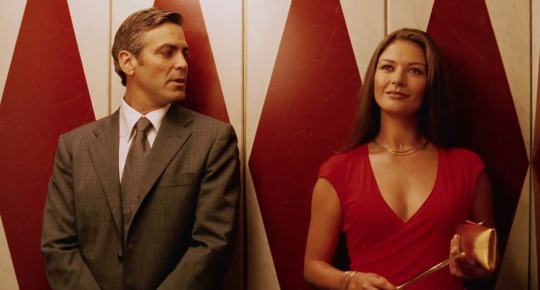
18. Intolerable Cruelty (2003) For a duo with so much distinct style and flair for storytelling, this film feels the least like a Coen Brothers film. If anything, this feels like a script that sat on a shelf in pre-development hell, possibly for years, only for someone considering themselves a bit of a ‘maverick’ or ‘forward thinker’ to discover it and think that a dose of Coen Brothers magic could save it. Even with the star power of George Clooney and Catherine Zeta-Jones behind it, this one feels a bit too ‘by the numbers’ to stand out from an oeuvre that nears perfection.

17. Hail, Caesar! (2016) I’ll be completely honest with you all... I don’t remember much about this film. I remember enjoying it, but I don’t remember being blown away by it. I remember enjoying the colorful display of old Hollywood, and it’s always refreshing to see George Clooney lean into roles that border upon slapstick. For as much as I found this film not all that memorable, however, it stands above Intolerable Cruelty simply because it does not trigger bad memories.
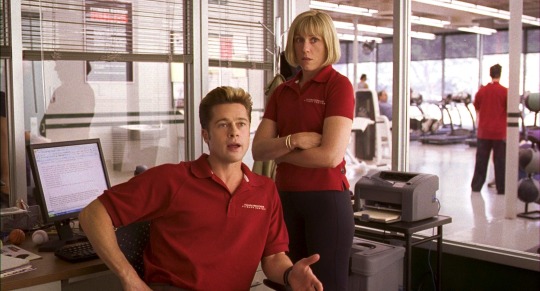
16. Burn After Reading (2008) This film is what Intolerable Cruelty wanted to be... a property that is a hair closer to by the books, but full of a screwball approach that heralds to a forgotten era of film while using an incredibly stacked cast. Of all the Coen Brothers films I’ve seen, Burn After Reading feels like the property that all involved enjoyed making the most. Like many of the Coen Brothers films, the cast on this one is mega-stacked, and from top to bottom, everyone involved shines in roles that go against their standard types, or amplify the most off-beat aspects of their performing ability.
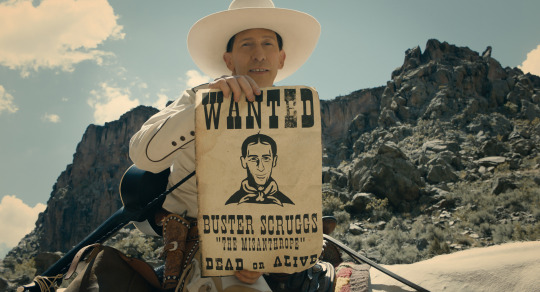
15. The Ballad of Buster Scruggs (2018) The fact that Netflix was able to pull the Coen Brothers for a film is a win in itself, and with the duo choosing to do an anthology piece, Netflix was primed to maximize on their investment. While highly entertaining, however, the anthology nature of the property leaves it feeling a bit unfocused and disjointed at times... none of these stories really had enough meat on the bone to be expanded into feature-length films of their own, but for some reason, all parties involved passed on the opportunity to make a multi-episode serial rather than a film comprised of multiple tales. While using variance in storytelling methods and visual styles may work for some less talented directors, in the case of The Ballad of Buster Scruggs, it feels more like snack-sized bites in the place of true sustenance.
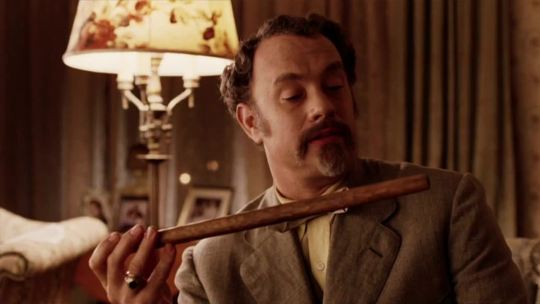
14. The Ladykillers (2004) On paper, this film should have been a disaster. The Coen Brothers generally opt for original stories, so the fact that they chose to adapt such an obscure 1950s property for the modern day was strange, especially in light of the fact that most every element with the exception of Tom Hanks’ character was given a modern update. Somehow, despite all of this oddness, The Ladykillers managed to capture a sense of the classic Coen Brothers slapstick comedy that they famously established themselves with early on in their career. Tom Hanks is given the green light to go completely ridiculous, and to much of the viewers’ delight, he does so with great aplomb. His supporting cast shines, the comedic turn brings new energy to the story, and the southern gospel setting brings a rich sense of spirituality to an otherwise run of the mill film.
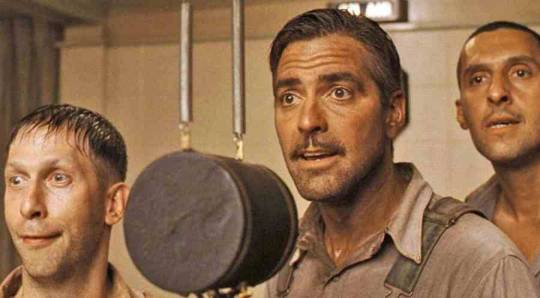
13. O Brother, Where Art Thou? (2000) The Coen Brothers were essentially household names by the turn of the 20th century, but O Brother, Where Art Thou? propelled them into a legendary status. The grassroots mix of The Odyssey and the Robert Johnson crossroads legend took on a life of its own, leaving behind a soundtrack that birthed an entire generation of folk and bluegrass enthusiasts, as well as a film that showed the world George Clooney’s comedic chops. Much like The Ladykillers, O Brother puts viewers deep into the unfamiliar territory of Southern ‘discomfort’, with the African-American experience playing a major role in the narrative. Of all the Coen Brothers films one could use to introduce a stranger to their catalog, this one may be the best, as its infectious nature and stunning look leaves an impression on most anyone who has the pleasure to view it.
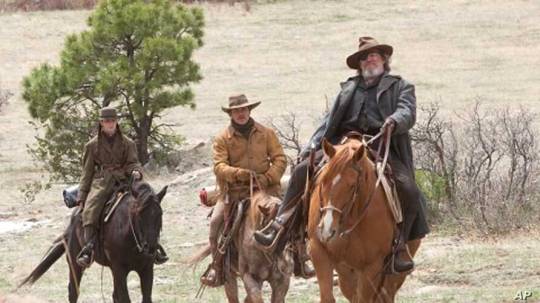
12. True Grit (2010) The Coen Brothers had already covered a wide bit of genre ground within their first three decades, but surprisingly, they’d not done a true western up to that point (though many argue that No Country For Old Men is a modern take on the western). Therefore, when it was announced that their first western would be a remake of the iconic John Wayne film True Grit, many were surprised, and curious if they could pull it off. Not only did they pull it off, but in my humble opinion, they made a version that more than holds its own against the original. For the handful of big name and seasoned actors that signed on, it was the breakthrough performance of relative newcomer Hailee Steinfeld that outshined all. While The Ballad of Buster Scruggs was a fun revisit to the world of the western, True Grit was the kind of achievement that makes me want more traditional westerns from the duo.
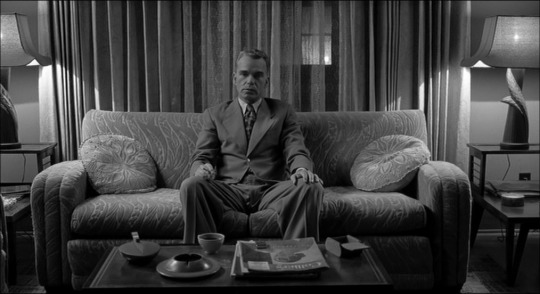
11. The Man Who Wasn’t There (2001) Listing the Coen Brothers films is by far the most difficult ranking I’ve done to date, and the first film that really gave me trouble in terms of placement was The Man Who Wasn’t There. Personally, I find this film to be captivating and nearly flawless... Billy Bob Thornton’s detachment is rich and intrusive, which makes it all the more sinister when he does choose to exude even a hint of passion about something, be it positive or negative. The black and white photography, in league with the tone of the film, puts me in the mindset of films like In Cold Blood, and some of the sequences in the film stand out as some of the most iconic in the world of Coen Brothers films, especially the car crash. For a classic-style film noir, a genre that anyone with half a brain knew was a slam dunk for the Coens, the duo went above and beyond to both modernize and wholly embody the style. One of several Coen Brothers films that sits with you long after the final credits have faded away.
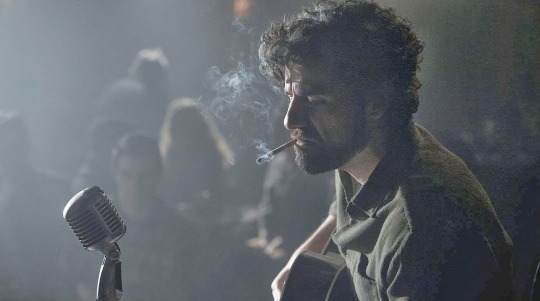
10. Inside Llewyn Davis (2013) If this isn’t the darkest comedy in the Coen collection, it’s certainly giving the number one contender a run for its money. The intimacy of this film is unmatched within the broader collection of Coen characters, excluding The Dude, but the difference between Llewyn and The Dude is the personality equivalent of the difference between oil and water. You may marvel at Llewyn’s talent, but all the while, the film is screaming at you that “THIS IS A CHARACTER YOU SHOULD NOT ROOT FOR”. The symbolism found in the film is minimal while being incredibly effective in how it punctuates Llewyn’s personality and character, and the story structure is an equally subtle swerve that baits you into paying deeper attention, only to realize that the setup was the punchline the entire time.
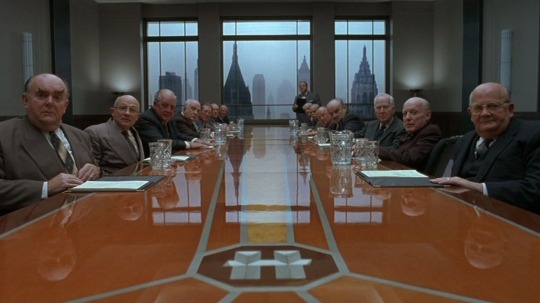
9. The Hudsucker Proxy (1994) I’m a sucker for a Coen Brothers comedy, especially the ones that play like human cartoons, and one of their absolute best was The Hudsucker Proxy. The writing on this film is so tight that it would absolutely pop if it were any tighter. The entire A Christmas Carol-esque approach to the story makes it a wonderful moralistic tale that makes people laugh so much that they often don’t realize they are being taught a lesson about morals, integrity and self-respect. Tons of familiar character actors fill the frames, everyone tasked with supporting roles fit firmly and comfortably into the created world, and the man trio of Tim Robbins, Jennifer Jason Leigh and Paul Newman are functioning on genius levels of performance... especially Jennifer Jason Leigh. While not quite a holiday movie, there is enough of a holiday sense that it could be shoehorned into a seasonal viewing, but any time set aside for this gem is the right time to watch it.
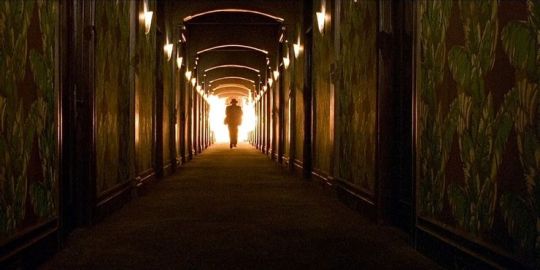
8. Barton Fink (1991) In my humble opinion, this may be the strongest end to end performance from John Turturro in his long and storied career. As clear-cut fans of film, it is always a pleasure to see the Coen Brothers explore the world of film, and by using this approach, they are able to tell a bold, brash and haunting tale about the issues that come with assumptions about character and talent. The takes on Hollywood and the indifference of those in power, especially when it comes to assisting young and promising talents that may one day usurp them, and powerful. The real bow on the story, however, is the larger than life presence of John Goodman, who goes from being a slightly aggressive and overbearing sense of support to a literal madman by both name and action. For a film that mainly consists of individuals talking to one another about passion, talent and secrets, there is a kinetic energy that feeds the forward momentum of this movie, and for that, it stands out in the Coen collection.

7. Miller’s Crossing (1990) It’s not surprising that the Coen Brothers could make a compelling and memorable gangster film, but I don’t think that anyone expected a film as vicious and dark as Miller’s Crossing. For a duo that generally relies on nuance and contemplation to get their points across, this film certainly proves that they are more than capable of excelling in the direct approach as well. The era-specific costuming is outstanding, the murky city areas stand in stark contrast to the woods of the titular Miller’s Crossing, and the sheer volume of bullets are a stark reminder of the Prohibition-era story we are viewing. Gabriel Byrne shines in his lead role, bringing a world of fury, deceit and mistrust in tow with him. The iconic hat blowing in the wind serves as not only the biggest memorable moment from the film, but possibly also the single moment of peace and beauty found in a film that holds up a dirty mirror to a dark world.
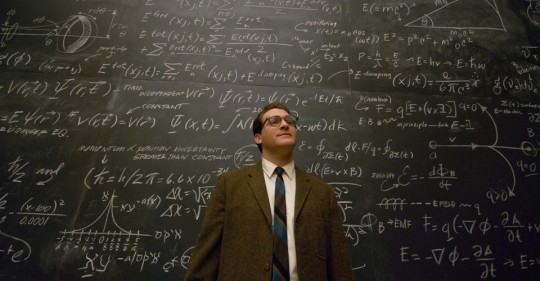
6. A Serious Man (2009) Of all Coen Brothers films, this is easily the most underappreciated and slept on of the bunch. I’m a sucker for movies that embrace Murphy’s Law, and when mixed with the parable nature of the Book of Job, we are presented with a darkly comic and relatively unique version of the hero’s journey. The way that the personal, professional and philosophical problems pile up on Michael Stuhlbarg’s Larry are meant to be felt by the audience, and the way that his bad luck boomerangs out into the world during the film’s resolution must be seen in order to be believed. The way that destiny and chance dance around one another in this film is narratively breathtaking, and for such a subtle film, it is a truly remarkable achievement.
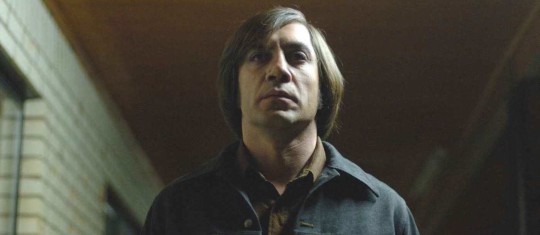
5. No Country For Old Men (2007) When you think of the Coen Brothers, you don’t necessarily think of evil incarnate, and yet, the duo succeeded in capturing a character in the form of Anton Chigurh, the closest thing to the Terminator that the duo has ever created (to my knowledge). The story is a wonderful, subtle tale of how the times can change into something we don’t recognize before we recognize the change, but it is easily Javier Bardem’s iconic performance that gives this film all of its power and ominous energy. His unyielding forward momentum, his disdain for obstacles in any form, and his disregard for human life are enough to instill real fear into those who partake in viewings, and his presence will more than likely haunt you far beyond completion of the film. A true modern-day masterpiece that would have been higher, if not for...

4. Blood Simple (1984) What a powerful debut, and one that not only hinted at, but outright put the spotlight on the promise of the Coen Brothers when it came to stark visuals and stunning storytelling. For such a simple, small scale story, the tangled web that is woven is a slippery slope of deception and distrust that leaves little to no survivors in its wake. The scale of the film is deceptively small, but the quality shines in every aspect that it can. Seeds are placed that pay off wonderfully, and the color palette presented gives the film the feeling of a Technicolor film-noir. Much like A Serious Man, Blood Simple deserves to be talked about and held up much more than it is by fans of film.

3. Raising Arizona (1987) What a wonderfully ridiculous movie about something as simple as the trials and tribulations of navigating love, marriage and parenthood. The most hilarious aspect of this film, in my opinion, is how it feels like a living and breathing cartoon, both in terms of the character performances and the outrageous events that take place within the world of the film. Nicolas Cage is operating on a completely different level, Holly Hunter is equal parts charming and hilarious, Trey Wilson is wonderfully over the top, John Goodman and William Forsythe bring excess hilarity to the wild proceedings, and Randall “Tex” Cobb is downright iconic in terms of his ridiculous character. The pacing of the film is breakneck and feverish, the comedy hits never stop coming, and the utter charm emanating from the midst of the caper presented is infectious. As a second film, this could not be any more different than Blood Simple, and yet somehow, it connected so vividly with viewers that it remains a must-watch film to this day.

2. Fargo (1996) What is there to be said about Fargo that has not already been said? For a duo with more iconic films to their name than some directors have completed films, Fargo was an immediate signal that the limits of the Coen Brothers’ creativity and skill had not even began to show its full breadth. Within less than five years of release, the film was already heralded as a classic (of all-time, not just modern day), the mystery surrounding its possibility of being based on a true story built a world of intrigue around the movie, and it has gone on to create a universe of its own in the form of an FX TV show that recently wrapped its fourth season. There is not a wasted role in this film, and to this day, any movie fan worth their salt will happily bust out their version of a Minnesota accent that is almost certainly based on one of the many memorable characters that inhabit the world of Fargo. Numerous actors, including William H. Macy, Frances McDormand and Steve Buscemi, all found breakout success in the wake of this wonderful film.
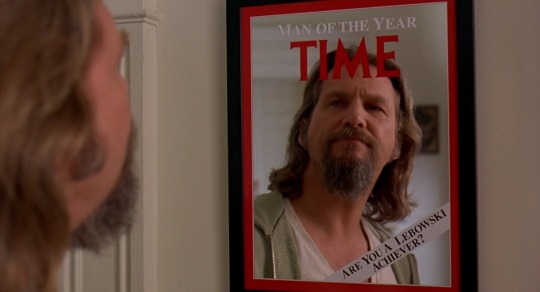
1. The Big Lebowski (1998) Was there ever any doubt for this placement? For everything that Fargo did in terms of success within the world of the film industry, The Big Lebowski did that and more for the worlds of the counter-culture and cult film fans. The story we are presented with is so simple, yet so ridiculous in its journey, that it almost insists on viewers revisiting it over and over. Like many Coen Brothers films, nobody cast in the film is wasted or misused, and due to these stellar performances, the film finds itself as one of the most quotable in recent memory. Much like the performances of the cast, the writing does not waste any words or opportunities, often referring back to itself in extremely subtle and nuanced ways that present themselves over time, and to hilarious effect. Nobody would have expected a film of this nature to have a fandom, and yet, the legions of fans for this film are unique to that of the Coen Brothers catalog in the sense of their dedication, devotion to and love of the movie. While not everyone’s cup of tea upon first viewing, The Big Lebowski is truly an example of the gift that keeps on giving.
If the Coen Brothers never make another film, they’ve already created and achieved more in their journey that most filmmakers can dream of. Many of their films could honestly be considered works of art, and nearly all of them are compelling with an ability to leave deep and lasting impressions. If you are unfamiliar with the Coen Brothers, do yourself a favor and check out their work, as it may bring a new sense of invigoration to your love of film.
Editor’s Note (12/10/2020) : Inside Llewyn Davis added to the number 10 position, all films ranked lower adjusted accordingly.
#ChiefDoomsday#DOOMonFILM#JoelCoen#EthanCoen#CoenBrothers#BloodSimple#RaisingArizona#MillersCrossing#BartonFink#TheHudsuckerProxy#Fargo#TheBigLebowski#OBrotherWhereArtThou#TheManWhoWasntThere#IntolerableCruelty#TheLadykillers#NoCountryForOldMen#BurnAfterReading#ASeriousMan#TrueGrit#InsideLlewynDavis#HailCaesar#TheBalladOfBusterScruggs
4 notes
·
View notes
Photo
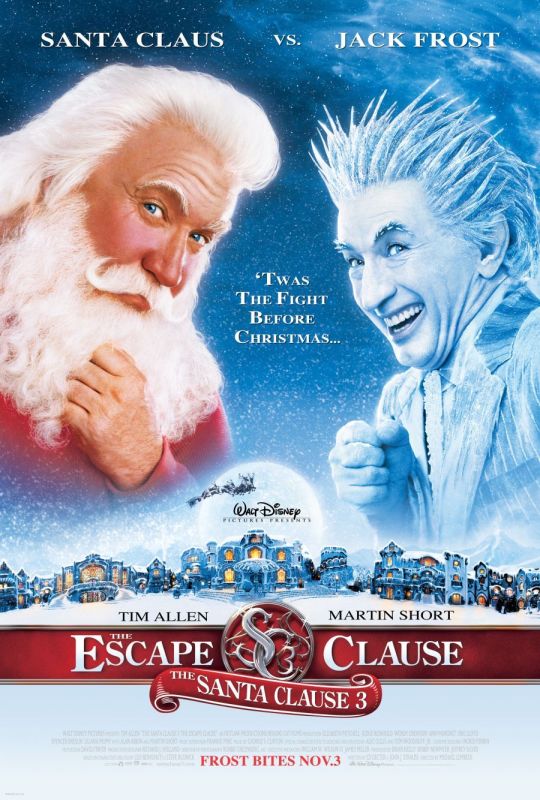
The Santa Clause 3: The Escape Clause
“The Santa Clause 3: The Escape Clause” ended being all style and no substance, cementing the franchise as forgettable.
Scott Calvin and Carol Newman have been living at the North Pole together for four years now. Carol is expecting a baby and is somewhat upset that Scott is busy year-round. To remedy this, Scott invites her parents to the North Pole but must keep it a secret from them, so he tells them they’re visiting Canada. Meanwhile, Jack Frost has been promoting himself as the new Christmas icon because he’s jealous of Santa Claus’s popularity. Because of this, the Council Of Legendary Figures sentences Jack to community service in Santa’s Workshop. There, he stirs up trouble and tries to get Scott to relinquish his position as Santa Claus.
I’ve said that the last two films had potential and didn’t capitalize on them. This film didn’t have any of that. From the opening of this film, I was impressed at how much the film had progressed visually. The effects were half-decent and somewhat inspired. However, it loses all that charm as the movie goes on. I appreciated the fact that they didn’t make Carol blindly happy in this film. She was essentially extorted to become Scott’s new wife in the last film and it wouldn’t have sat right with me if everything was all better now. As expected, she’s unhappy because she’s being neglected due to Santa’s busy work-life. Honestly, I don’t know why they had Carol be pregnant throughout this film. It’s mentioned once in the beginning and once at the end when she ends up giving birth. My best guess is that they wanted to cram that ‘deliver before you deliver’ joke in. Jack Frost is meant to be the antagonist of this film, but he’s more of a nuisance than anything. I like his costume design, but that’s about it. He’s a background bother until the script needs him to step up. Before that, we’re subjected to half the movie being about a workshop disaster followed by Scott needing to solve the problem and the in-laws being progressively more and more disapproving. The Escape Clause is mentioned out of nowhere during the meeting of the Council Of Legendary Figures just so Jack Frost could use that against Santa. The whole process is convoluted and they had to jump through flaming hoops to get Jack to trick Santa into invoking the Escape Clause. Meanwhile, I was sitting there wondering why the writers just didn’t make the process easier. Jack Frost obviously abuses his power as Santa, a weirdly dry musical act ensues, and Scott gets his powers back. The only interesting part of that whole third act was the small glimpses we got to see of the lives that were altered from Scott never becoming Santa. I wish we could’ve seen more of that, but of course, the film never wants to do anything interesting. By the end of this movie, I had a realization. Scott affects the lives of the people around him negatively. His son is basically forced into a life of lies. His wife was basically kidnapped and forced to lie about her life to her parents. In the last movie, he states that being Santa is a big responsibility, yet he’s shown time and time again that he’s not willing to make personal sacrifices for the children around the world. I hope that if they make another sequel, they would focus on Scott passing the torch on to someone else who’s more fit to be Santa Claus because he sure as hell doesn’t deserve it.
★★
Watched on December 19th, 2020
#The Santa Clause 3: The Escape Clause#November#2006#Christmas#Comedy#Children's#G#Michael Lembeck#December 2020#2 stars
2 notes
·
View notes
Text
The Mosley Review: Best Films of 2019
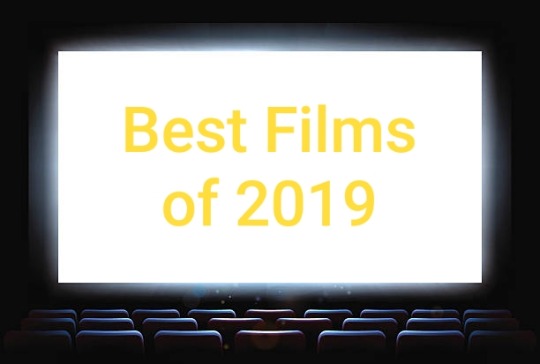
Wohoo! 2019 has come and gone and man did it fly by. This year we had sooooo many fantastic films and this year was probably the hardest list to put together. I really wanted to include alot more, but I had to make a few cuts. Now I tend to keep my list to the traditional 10 films, but on some occasions I've extended it to 11. This is one of those occasions. I have one runner up that is worth mentioning and I think it should not be missed.
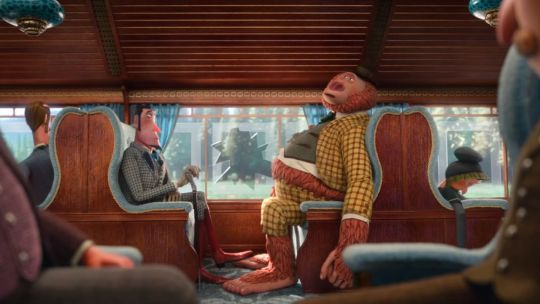
Missing Link: Many animated films are computer generated now and the art of hand drawn animation is rarely shown. The one type of animation that is all but extinct is stop motion animation. It takes time, patience and passion to bring to life characters with such sophistication and care in an almost forgotten art form. The masterminds at Laika are truly imaginative artist and this film shows that in every frame. Not many films take the story of the myth behind Sasquatch to fun places without being hokey and I was relieved that this film took it seriously and pumped so much fun and heart into the story and I think this was a hidden gem of 2019. Click the title for my full review.
Now, on to my list of 2019's best films of the year. If you want my full review of each film then go ahead and click the title of each film. First one up is definitely a fantastic sequel to a film that the author hated, but loved the film adaptation of his second book.

Doctor Sleep: The Shining is a classic that can never really be touched. Stephen King is famously known for disliking the film adaptation of his novel, but with his blessing placed upon Mike Flanagan's vision for the sequel novel, we got this magnificent film. Not only does this film pay tribute to Stanley Kubrick's film, but it also follows the same rules and visual structure while keeping the film fresh. The tone was consistent and the performances were across the board amazing. Ewan McGregor, Rebecca Ferguson and the talented Kyliegh Curran deliver absolute greatness. This film features stunning and intriguing dark moments, but definitely has one of the most disturbing scenes I've ever seen and its all because of Jacob Tremblay's performance in THAT scene.
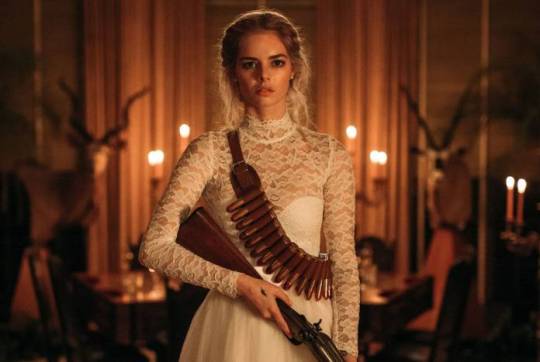
Ready or Not: How many times have we seen the family initiation story in a romantic comedy? A dozen times I tell you! Well how about you take the same concept, throw in a fun horror version of hide and seek with a hint of the supernatural and great dark comedic writing. You get this fantastic film that is all of that and more. Luckily I stayed away from any major trailers for this film because in retrospect, the R rated trailer gave away too many of the fun gags. The performance of each family member was awesome and this was a standout performance for Samara Weaving. Every year from now on, this film will be on my Halloween watchlist. I loved this film and I can't recommend it enough.
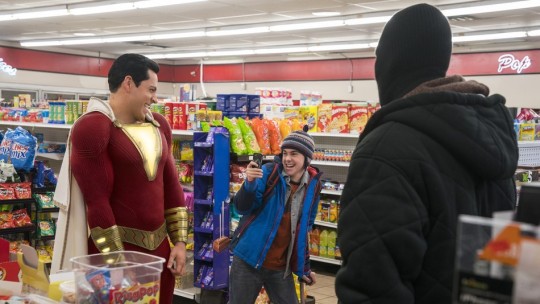
Shazam!: Batman (1989), Superman (1978), The Dark Knight Trilogy and Spider-man: Into the Spider-verse are just to name a few of perfect adaptations of a comic book character to screen. This film was beyond perfection in many ways and the best DC film to date. This film had the right amount of fun, darkness and heart that embodies the life of the titular character. I could see the amount of genuine fun the cast was having on screen and the heartfelt performances of Asher Angel and Zachary Levi were outstanding. Jack Dylan Grazer stole the film with his amazing comedic speed and wit. This was truly a film I had high hopes for and it didn't disappoint.

Avengers: Endgame: How do you start a story in 2008 and bring it to an amazing and satisfying conclusion that wraps up 11 years of storytelling? You have a plan, a clear vision from the very beginning and with that it'll special success. Producer Kevin Feige set out on a journey to bring to life some of the best superheroes and keep them together in a cohesive and long formed narrative to complete a saga that's never been done before. He did it with the best talent behind each film's camera and The Russo Brothers have delivered the most epic film the superhero film genre has ever seen. I have waited my entire life to hear Captain America say "Avengers Assemble!" and I'm so happy I've lived long enough for my dream to come true. This was an emotional journey and end to The Infinity Saga. I really can say so much more about this crowning achievement in storytelling, but I'll keep this summary short.
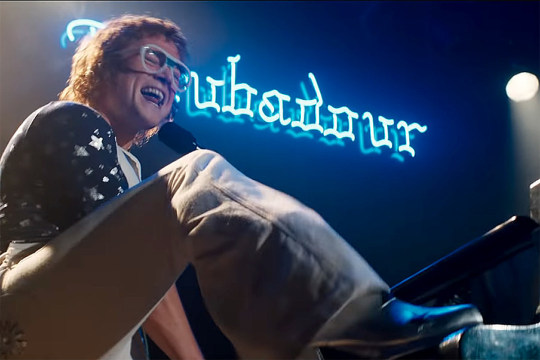
Rocketman: It was only a mater of time before we got a biopic about the incomparable music legend Elton John. I was hoping that it would not shy away from his sexuality, addictions and his bright and explosive since of style. Well this film jumped right in and held nothing back and I loved every bit. It was truly a fantastical film that had enough gravity and style. The musical locations illustrate his most important moments in his life and are visually stunning and accurate recreations of his most iconic performances. Taron Egerton was Elton John and I loved that he sang all the music. This was truly a masterpiece.
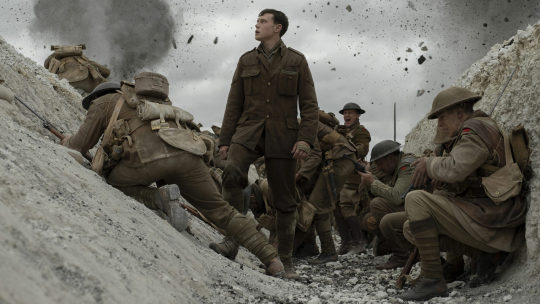
1917: World War II films are a dime a dozen, but the World War I films are rare. Sam Mendes is one of the best directors and all of his films take you on a journey through the eyes, mind and soul of a character and he did exactly that in this film. The fact that this film is almost shot completely in one continuous take, gives every moment gravitas and tension as you watch our main character go along and across enemy lines to prevent an ambush. The score was truly haunting by Thomas Newman and my favorite piece from this film was from the flare scene. Such an stunning achievement in filmmaking should not be missed.
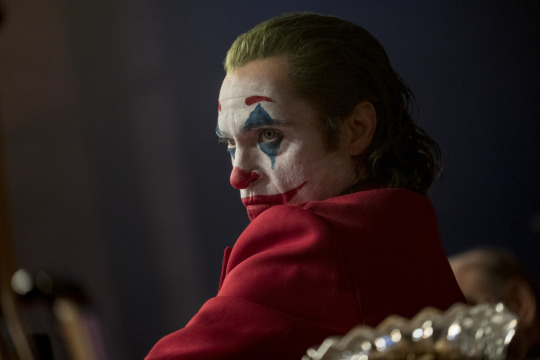
Joker: The clown prince of crime has had many iterations over the past 80 years. The most influential and canonical version of the character came from Frank Miller's The Killing Joke. Heath Ledger's take was iconic and made you scared because of his unpredictability. Joaquin Phoenix has taken the character and given a truly disturbing and authentic performance. As Arthur Fleck, we see through a constantly unraveling psyche, a man become a new and real kind of monster. Not only is this version the most unsettling, but it was beautiful. The cinematography was great and I loved how we got into the mind and heart of the character when he wasn't even speaking. This is a definition of how a person being pushed through horrible conditions can truly become a monster and yet be free. I loved this film and I think it will be studied in many acting classes from here on out.
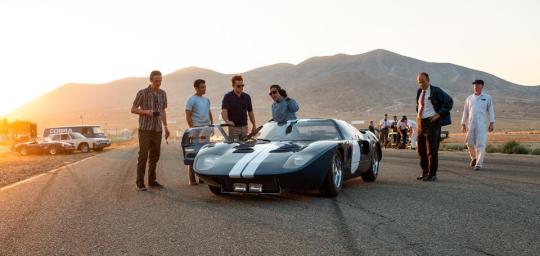
Ford v Ferrari: There needs to be more racing films of this caliber! I love racing films that are not just about the cars, but also the drivers and their stories. This film was based on the true friendship between Carol Shelby and Ken Miles and I can't say enough how much attention to detail and heart that was put into every frame. The sound design in this film was crisp and powerful. The performances by both Matt Damon and Christian Bale was truly amazing and they had the best chemistry. Their fight scene was the funniest and most realistic fight I've ever seen between 2 friends. James Mangold is one of my favorite directors because of his focus on characters and story first before the action. This was a love letter to the world of racing and a respectful look at the lives of these pioneers of ingenuity and racing.
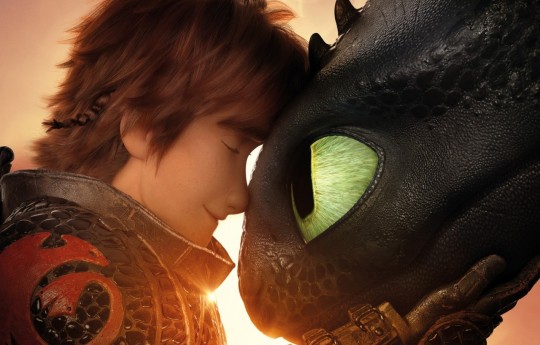
How To Train Your Dragon: The Hidden World: How do you make a perfect trilogy? How do you wrap it up with a satisfying and emotional ending? You focus on the story and stay true to the message and heart you started with in the beginning. You let the character bonds naturally grow and make each adventure a learning experience. This film was a perfect ending to the franchise and I can't stress how much I felt like I was with Hiccup and Toothless on their journey to this conclusion. The performances from the cast were stellar as always and although the villain may not have been as great, he still was a good addition. The visuals were the best and the textures in the scales and sand were out of this world. The score by John Powell truly brought me to tears as I got to say goodbye to my favorite companions. If you ever owned a pet, you known the emotional bond that is forged. This was the ultimate pay off and as a pet owner I saw my dog in Toothless' eyes. I will miss this franchise. If you're not crying by the end of this film then something is wrong with you.
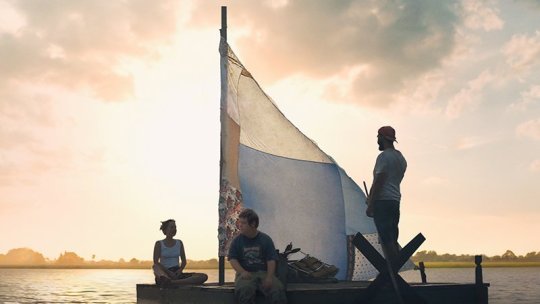
The Peanut Butter Falcon: There are some independent films that take a risk in going outside of the norm and telling a story that nobody would have ever dreamed. This film was truly something special and I can't tell you how happy I was throughout. This film focuses on an individual with down syndrome whose dream is to become a wrestler and it is something truly inspirational and heartwarming. Zack Gottsagen was truly brilliant and awesome in this film. I loved his journey and his will to keep going. Shia Lebouf delivers an equally powerful performance and his chemistry with Zack was very sweet. This is one of the best films of 2019 and the most important films of the decade.
And here we are ladies and gentlemen! This is the moment you've all been reading toward. This film was an automatic choice for me the moment the end credits rolled. The crowing jewel of 2019 is none other than.....

Booksmart: I have seen so many high school teen comedies about partying or loosing your virginity before graduation, but never have I seen a film so engaging and focused on the bond of two bestfriends. Their bond was the heart and soul of the film and you couldn't have asked for a better pair of actresses. Beanie Feldstein and Kaitlyn Dever were beyond perfection in every moment of this film and they had me cracking up left and right. Their adventure over the course of one night was truly fun and you are along for the hilarious ride. Billie Lourd nearly stole the whole film out from under them with her surprising and hilarious appearances. The music choices in the film were awesome as well. The comedy in this film was so fresh and from the first 6 minutes of the film you’re locked into these two ladies chemistry. I can't stress enough how much joy this film brought me and for a film to be on my mind for the entire year and to have me constantly recommending it to everyone I know is an achievement of itself. Olivia Wilde has directed a true masterpiece and new definition of a coming of age story. I can't stop gushing about this film so I'll finish off by saying WATCH THIS FILM!
And that is my list of the best films of 2019 and man has it been a great year in film. Lets hope 2020 starts off the decade with a bang! Thanks for reading everyone.
#best films of 2019#missing link#laika#hugh jackman#zack galifianikis#doctor sleep#stephen king#Ewan McGregor#ready or not#samara weaving#avenger endgame#robert downey jr.#Rocketman#taron egerton#elton jon#1917#Sam Mendes#joker#Joaquin Phoenix#ford v ferrari#james mangold#the peanut butter falcon#shia lebouf#booksmart#Olivia Wilde#beanie feldstein#kaitlyn dever#billie lourd
61 notes
·
View notes
Text
ENTREVISTA CON ALFRED HITCHCOCK (1972)
Algunas reflexiones sobre la noción de autor
ALFRED HITCHCOCK.—Nunca pienso en los films que hago como si fueran mis films. No poseo esta vanidad o este egoísmo. Si hiciera películas para mi propia satisfacción, ciertamente serían muy diferentes de las que ustedes ven. Serían mucho más dramáticas, quizás sin humor, más realistas. La razón por la que, digamos, me he especializado en el suspense es una razón estrictamente comercial. El público espera de mí un determinado tipo de historia y no quiero decepcionarle.
El «autor-realizador», instintivamente, aborda siempre un cierto tipo de tema. En mí, esta constante es una especialización. Sé muy bien que cuando el público va a ver un film con la firma de Hitchcock, si no halla en él alguno o varios crímenes, se siente decepcionado. Es una regla a la que no escapan tampoco los críticos. Hace mucho, en 1949, acepté hacer un film-vehículo para Ingrid Bergman, Under Capricorn (Atormentada). Pues bien, no funcionó. Cuando se estrenó, un crítico de Hollywood escribió: «Tenemos que esperar ciento cuatro minutos antes de sentir el primer estremecimiento.» Ahora bien, yo no quería hacer de ninguna manera una película con «estremecimientos». Por exigencias del guion había en un determinado momento un plano de una cabeza momificada colocada sobre un lecho, pero esto era todo. Si esta frase se me ha quedado grabada en la memoria es porque demuestra el mecanismo del pensamiento del público y de la crítica en relación con mi obra. Un día, a propósito de The Birds (Los pájaros), Fellini me hizo esta observación: «Jamás hubiera tenido el valor de hacer esperar al espectador tanto tiempo antes de mostrarle el primer pájaro.» Incluso las personas que ejercen el mismo oficio que yo pueden sentirse decepcionadas si desde el principio no encuentran mi marca de fábrica: cuchillos, gargantas cortadas..., «estremecimientos».
PREGUNTA.—Su teoría sobre los «autores» la encontramos en boca de Joan Fontaine en Rebecca: «Mi padre pintaba siempre la misma flor porque estimaba que cuando un artista había encontrado su tema tenía un solo deseo: no pintar nada distinto a éste...»
HITCHCOCK.—Sí. Esto es muy evidente en los pintores. Podemos constatarlo plenamente cuando vamos a visitar un museo. Al mirar los cuadros de diferentes maestros notamos que cada uno de ellos tiene un estilo que le es propio. Al primer vistazo se reconoce un Rousseau o un Van Gogh, un Klee... Entonces, yo me pregunto por qué no se reconoce siempre la marca de un director (director) o de un realizador (maker) —no me gusta la palabra director, porque me parece errónea y prefiero la palabra maker—. Pues bien, creo que una de las principales razones de esta imposibilidad de identificar el sello de un realizador es que la mayor parte de ellos carece de estilo. De la calidad y del valor del tema depende generalmente la calidad y el valor del film que dirigen. En cuanto a mí, el contenido de una historia, la intriga, apenas me interesan. Lo que me apasiona es la forma de contar. Y lo que me atrae es descubrir qué cosa provocará una emoción fuerte en el espectador y cómo hacérsela experimentar.
Por otra parte, considero que en todos los terrenos artísticos pretendemos crear una emoción. La importancia de una obra de arte, sea cual sea ésta, radica en suscitar una reacción. Poco importa la clase de reflejo que provoque. Desde el momento en que se dice «me gusta» o «detesto», ello significa que no se es indiferente. Me gusta mucho la historia de esta joven pareja que va a visitar un museo de arte moderno. Se detienen, perplejos, frente a un cuadro abstracto, cuando de pronto una mano, señalándolos con el índice, surge del cuadro y les dice: «¡Tampoco yo les comprendo a ustedes!»
Un realizador puede repetirse como lo hace un pintor. Si ustedes me preguntaran: «¿Por qué Boudin ha pintado siempre el borde del mar y nunca el zoo?», yo les respondería: «Simplemente, porque no tenía más ganas de pintar el zoo que las que tengo yo de hacer una comedia musical.»
De todos los colores...
HITCHCOCK.—Cuando un crítico no es muy profundo —fenómeno menos raro de lo que podría creerse—, se limita a contar la historia de la película que ve. Considera que narrar unos acontecimientos es hacer «crítica». Esta me parece una actitud muy perezosa, a menos que sea una forma de disimular una profunda ignorancia. ¿Por qué un crítico de cine tendría que ser distinto de un crítico de pintura? Se da por sabido que un crítico de pintura tiene que conocer su tema, ¿no es así? Tiene que saber, por ejemplo, que Cézanne es uno de los precursores del movimiento artístico moderno. Que para él lo más importante era traducir sus sensaciones visuales... También yo cuando me enfrento con un guion siento idénticas necesidades.
Muchas veces, cuando acabo de terminar una película, me pregunto por qué la he hecho y desearía no haberla rodado. Quizás ello se deba a que no me gusta estar obligado a ir al estudio cada mañana para decir que éste no es el color adecuado y que necesito otro y para corregir todo lo que está equivocado. Para mí, toda la construcción de un film tiene que hacerse durante la elaboración del guion. A menudo, a propósito del teatro, se repite que una comedia no existe antes de ser interpretada ante un público. Que la obra se vuelve un todo en el momento en que el público y el creador se unen... Pero soy demasiado profundo esta mañana, ¿no les parece? Háganme otra pregunta.
PREGUNTA.—Lo que me gusta en sus películas es la precisión de su puesta en escena. Incluso en películas menores como Dial M for Murder (Crimen perfecto) y To Catch a Thief (Atrapa a un ladrón), usted consigue en algunos segundos —con los planos de obertura— sumergirnos plenamente en el tema...
HITCHCOCK.—Siempre. Vean Frenzy (Frenesí): en el primer plano se ve un cuerpo flotando en el Támesis y uno comprende que no se trata de una comedia de salón...
PREGUNTA.—Género que usted ha abordado sólo una vez en su vida: en 1941, con Mr. and Mrs. Smith (Matrimonio original).
HITCHCOCK.—Sí, es verdad. Pero deben convenir en que no se trataba realmente de un film para mí. Acababa de terminar Rebecca y Foreign Correspondent (Enviado especial), cuando Carole Lombard, con la que había trabado amistad, me dijo: «¿Por qué no me diriges en una película?» Acepté su proposición. El guion estaba escrito para alguien distinto a mí, pero como mi oficio era realizar películas, lo cogí, fui al plato, grité «¡motor!», «¡corten!» y lo rodé. Tan sencillo como esto. ¿Les parece una comedia triste? Quizás. Esto debe reflejarse en el rostro del patrón del pequeño restaurante al que van Robert Montgomery y Carole Lombard...
Ben Hecht y Raymond Chandler
HITCHCOCK.—Sí. Ben Hecht trabajó para mí en Spellbound (Recuerda) y Notorious (Encadenados). Era un guionista extraordinario y un hombre maravilloso. Discutíamos mucho tiempo antes de poner la menor cosa sobre el papel. A veces se volvía muy perezoso y me decía: «Vale, Hitchie, escribe los diálogos que quieras y luego yo los corregiré.» Ben era como un jugador de ajedrez. Podía trabajar en cuatro guiones a la vez. Además, tenía a cuatro «negros» que escribían para él.
En cuanto a Raymond Chandler, nuestra colaboración fue mucho menos feliz (1). Al cabo de un tiempo, tuve que renunciar a trabajar con él. A veces, cuando intentábamos encontrar ideas para una escena, se me ocurría hacerle una sugerencia. En lugar de estudiar si era buena, muy disgustado, me hacía notar: «Si puede conseguirlo por sí solo, ¿por qué demonios me necesita?» Rehusaba toda colaboración con el realizador.
«In the car, coming to the studio»
PREGUNTA.—El llorado Fernand Gravey me contó la respuesta que usted le dio a propósito de la escena de lucha cerca del horno de Torn Curtain (Cortina rasgada)...
HITCHCOCK.—He aquí toda la historia: descontento del guion, yo quería retrasar el rodaje, pero esto no era posible por problemas de fechas de Miss Andrews. A propósito de Miss Andrews, por otra parte, quiero decirles que había intentado en vano prescindir de sus servicios, alegando que era una cantante y no una «sabia», pero el estudio la consideraba como un valor seguro del box-office.
Entre tanto, Newman, que había leído el guion y lo encontraba malo —cosa que yo ya sabía— me envió una carta para plantearme cuestiones que le preocupaban. Entre ellas había una particularmente estúpida que, una vez más, me ha demostrado que los actores son «ganado»: «Cuando peleo con Gromek, junto al horno, ¿por qué la granjera, que se encuentra en el otro extremo de la cocina, piensa inmediatamente en abrir el gas para ayudarme a matarlo? Y, sobre todo, ¿en qué momento se le ocurre esta idea?» Más tarde, cuando nos encontramos, Newman me explicó que habría sido más normal que esta idea surgiera en la mente de la mujer si ésta se encontraba cerca del horno, porque sólo habría tenido que bajar la cabeza para descubrir el arma del crimen al alcance de los dos hombres que estaban luchando. Alucinado, le volví la espalda y me fui. A la mañana siguiente, al llegar al estudio, le dije: «Paul, he solucionado el problema de la granjera. ¿Sabe cuándo se le ocurre la idea de meter en el horno la cabeza de Gromek? En su coche, cuando va al estudio.»
PREGUNTA.—¿Qué otra actriz le hubiera gustado en lugar de Julie Andrews?
HITCHCOCK.—Eva-Marie Saint. Está formidable en North by Northwest (Con la muerte en los talones). Helen Rose, que hacía el vestuario del film, había confeccionado su guardarropa, pero al ver las pruebas en la pantalla yo había constatado inmediatamente que no era posible utilizarlo. Helen Rose había vestido a la actriz sin tener en cuenta al personaje, el de una mujer mantenida por un hombre rico. En compañía de Eva-Marie me dirigí a un gran modisto y actué exactamente como un hombre rico que mantiene a una mujer: supervisé la elección de su guardarropa en todos sus detalles...
PREGUNTA.—¿Exactamente igual como hacía James Stewart con Kim Novak en Vértigo?
HITCHCOCK.—Sí, salvo en el detalle de que James Stewart no discutió el precio de los vestidos, mientras que yo intenté por todos los medios obtener una rebaja, pretextando las necesidades del film. Pero me contestaron secamente que tenía que pagar el mismo precio que la señora Henry Ford. ¡Y es lo que hice!
Vértigo
PREGUNTA.—En Vértigo sus problemas con Kim Novak fueron de otra índole, ¿no es así?
HITCHCOCK.—Sí, me fue muy difícil conseguir lo que quería de ella, porque Kim tenía la cabeza llena de ideas personales. Pero como estoy contento del resultado... De todas formas, el papel estaba previsto para otra actriz. Vera Miles, que ya había utilizado en The Wrong Man (Falso culpable). Estábamos a punto de rodar, con su vestuario terminado, estudiados y elegidos los distintos colores del pelo, etc., cuando Vera, en lugar de aprovechar la oportunidad de su vida, ¡se quedó encinta! Con esta película se hubiera convertido en una estrella, pero no supo resistir al Tarzán de su marido, Gordon Scott.
PREGUNTA.—¿Cómo rodó el admirable travelling circular en Vértigo cuando James Stewart siente que en Judy, la chica que está a punto de besar, hay algo que le recuerda a Madeleine, la mujer que amaba? El presente y el pasado se funden con el decorado...
HITCHCOCK.—Ante todo, quería probar que si un hombre se acuerda de algo, siente este recuerdo, no lo contempla, como hemos visto en tantas películas en forma de los tradicionales «flashes-back». Quería a un hombre con una mujer entre sus brazos, experimentando una sensación idéntica a la del momento original. Para obtener esto, hice construir los decorados de una habitación de hotel y de una granja y los reuní en el mismo plató. Luego, hice construir las paredes de fondo que vemos en la pantalla, primero las del hotel y luego las de la granja. Instalé a los actores sobre una mesita giratoria e hice que cada cosa se moviera circularmente.
Topaz
HITCHCOCK.—Es un film muy complejo que no lleva solución en sí mismo. La mejor escena, o sea, la secuencia en el estadio Charlety, no figura en la versión definitiva. Cuando el héroe llega a su casa para decirle a su familia que Piccoli quiere batirse en duelo, le responden que es una locura, porque es un «deporte» que ya no se practica. Y pregunta al yerno: «¿Cuándo tuvo lugar el último duelo en París?» «Hace cuatro o cinco años, responde, entre el marqués de Cuevas y Serge Lifar.» Entonces, el actor principal (2) explica a sus parientes que no se trata de un duelo tradicional, que se detiene con la primera gota de sangre, ya que el hombre que lo ha provocado quiere matarle realmente. Hace muchísimo tiempo, me acuerdo de haber visto en una revista —quizás en Paris-Match, pero no puedo afirmarlo rotundamente— la foto de un duelo en un estadio vacío. La imagen de estos dos hombres rodeados por las filas de asientos vacíos, solos en el centro del campo, al fondo del cual destacaba la publicidad de Dubonnet, me fascinó. Y ésta es la escena que rodé para Topaz en Charlety. En lo más alto de las gradas había situado a un tipo con un fusil de alta precisión, mirando el campo de juego. En el momento en que los dos hombres iban a batirse, apuntaba a la espalda de Piccoli y disparaba, para desaparecer después. A los aterrorizados testigos el héroe les decía: «Los rusos lo han matado. Ya no les era útil.» Este era el auténtico final de la película. ¿Y saben por qué lo cortaron? ¿Porque no le gustaba a la mujer del productor? No, lo suprimí tras una «preview» en Estados Unidos. El final que conocen ustedes, en el que Piccoli se suicida, es un final de compromiso. Un horrible compromiso.
PREGUNTA.—¿Dónde rodó usted la secuencia del hotel de los cubanos en New York?
HITCHCOCK.—Totalmente en estudio. Quería rodarla en el auténtico «Hotel Teresa», situado en la Séptima Avenida, en el corazón de Harlem, pero había sido transformado en edificio para oficinas. Pensé en utilizar el exterior del inmueble, colocando a la entrada la placa con «Hotel Teresa» y decorando la recepción. Pero, en el último minuto, cuando todo estaba dispuesto, John Lindsay, el alcalde New York, no nos concedió permiso para rodar allí. Pensaba que le habría sido imposible evitarnos toda una serie de problemas que se nos habrían presentado. Así, nos vimos obligados a reconstruirlo todo en el estudio. Pero mantuvimos las mismas proporciones que en la realidad. Evitamos la trampa de las miniaturas. Para rehacer fielmente los decorados utilizamos fotos y postales de la época en que Fidel Castro habitaba en el hotel.
PREGUNTA.—¿Cómo concibió las escenas con Castro y el Che?
HITCHCOCK.—Encontramos un documental en 16 milímetros en el que aparecían todos estos personajes de la revolución cubana. Hice construir, en exteriores, una plataforma absolutamente idéntica a la que se veía en esta película y le pedí a mi director de fotografía que filmara en las mismas condiciones técnicas a los actores que yo había colocado en el estrado. Para acabar, mezclé mis escenas con las del documental y lo hice ampliar todo a 35 mm.
PREGUNTA.—Cuando Juanita (Karen Dor) muere, es una flor que se abre...
HITCHCOCK.—Sí, en efecto... Justo antes de que John Vernon la mate, la cámara efectúa un travelling hacia arriba muy lento que sólo se detiene en el momento en que ella se desploma. Yo había dispuesto alrededor del vestido de Karen Dor cinco hilos de algodón que eran maniobrados por cinco hombres fuera de campo. En el momento en que ella se desplomaba, los hombres tiraban de los hilos y el vestido de desplegaba como una flor que se abre... Era un contrapunto. Aunque se trate de una muerte, quería que fuese muy bella.
¿Saben ustedes por qué, después de Topaz, siempre tengo miedo de coger un avión en Estados Unidos? Porque temo que lo secuestren. No me gustaría encontrarme de pronto en Cuba, aunque quizás allí fuera mejor recibido que en Rusia, país en el que estoy proscrito. ¿Sabían ustedes que mis películas están todas ellas prohibidas en la Unión Soviética? Al parecer allí consideran que Mr. Hitchcock es un anti-humanista. ¿Divertido, verdad? Quizás ahora que Nixon le ha ofrecido un Cadillac a Brejnev las cosas cambien un poco...
PREGUNTA.—Volviendo a Topaz, ¿cómo rodó usted la escena de los pájaros que transportan los trozos de pan abandonados por los espías occidentales?
HITCHCOCK.— Para hacer esta escena contraté a Ray Berwick, el hombre con el que había trabajado en The Birds. Fijó los trozos de pan en el pico inferior de los pájaros. Así de sencillo.
Frenzy
PREGUNTA.— Richard Blaney (Jon Finch), personaje principal de Frenzy es, como todos sus héroes, acusado de crímenes que no ha cometido. Pero, al contrario que otros protagonistas de películas precedentes, no resulta muy simpático para el público. ¿Por qué?
HITCHCOCK.— Porque es un «born-looser». Quise que el público no estuviera de su parte más que al final de la película. Blaney es un joven airado, un violento; necesitamos cierto tiempo para simpatizar con él. La vida ha sido muy dura con él. Su mala suerte le lleva a ser condenado a veinticinco años de prisión, siendo inocente. Sabiéndose perdido y conociendo la auténtica identidad del criminal, decide justificar su condena y usar de un derecho casi bíblico: «ojo por ojo, diente por diente». Y huye de la prisión para matarlo. Pero todos estos elementos están en la película en un grado secundario. Mi objetivo es divertir al público y no ponerle serio. Ir al cine es como ir al restaurante. Es preciso que una película satisfaga tanto al cuerpo como a la mente.
PREGUNTA.— En Frenzy hay personajes tan innobles como Bob Rusk (Barry Foster). Pienso, por ejemplo, en el patrón del pub «El Globo», Forshyte (Bernard Cribbins).
HITCHCOCK.—Sí, es verdad. Es particularmente horrible. Pero no hay que olvidar que está enamorado de la camarera y que sus sentimientos orientan su conducta. En cuanto al asesino, es normal que parezca educado y simpático; en caso contrario, no podría intimar con ninguna de sus víctimas. Muchos realizadores cometen el error de hacer del «malo» un señor más bien feo con un ridículo bigote negro y que no duda en darle una patada al perro que pasa por su lado. Pero todo esto es cosa del pasado, de cuando había la costumbre de iluminar con una luz verde el rostro del traidor. El cine ya no está en sus balbuceos. El oficio ha evolucionado y se tiene una concepción totalmente diferente de la forma de tratar un drama. Antes, siempre había que prevenir al espectador de qué lado se encontraban los protagonistas. ¿Quiénes eran los buenos, quiénes los malos? Hoy en día nos hemos vuelto más realistas y podemos profundizar mejor. En mi historia, es evidente que el asesino tiene que ser bastante simpático, incluso seductor... Si le hubiera dado rasgos más duros y un aire de obseso sexual, todas las chicas que se encontraran con él tendrían que salir huyendo. Todo esto no lo he adivinado: es el resultado de un análisis profundo. He estudiado numerosos casos en los que figuraban asesinos de este tipo. Todo el mundo sabe que uno de los insectos más seductores para sus víctimas es la araña. Para ilustrar mejor esta idea, hay incluso una expresión: «Will you come into my parlour, said the spider to the fly» («Quiere venir a mi tocador, le dijo la araña a la mosca»). Los cuentos infantiles, por otra parte, muchas veces nos ponen en guardia contra las falsas apariencias. Así, en «Caperucita roja» tenemos a la simpática abuelita que es un lobo, en «Blancanieves» la encantadora viejecita de las manzanas es la bruja... ¿Y no hay una expresión que dice «un lobo con piel de oveja»? Todas estas consideraciones me han conducido a hacer de mi asesino un ser encantador a quien una chica puede recibir encantada en su apartamento.
PREGUNTA.—¿No cree que la secretaria de Mrs. Brenda Blaney habría hecho quizá la felicidad de Bob Rusk... si hubiera sido su tipo de mujer?
HITCHCOCK.—Es muy posible. En todo caso, habría dado una escena muy interesante al verles hacer el amor juntos.
PREGUNTA.— Después del crimen de Mrs. Blaney y del de Babs, la camarera, la cámara se queda sola durante un tiempo. En el primer caso, espera abajo que la secretaria de la víctima —a quien acabamos de ver entrar en la casa— grite para anunciar el descubrimiento del cadáver. En el segundo, baja retrocediendo las escaleras (vacías) que conducen al apartamento de Bub Rusk tras haber abandonado a este último a la puerta que ha franqueado con Babs con intención de matarla.
HITCHCOCK.—En el primer caso le digo al público: «Han visto ustedes muchas películas en las que se descubre un cadáver. Invariablemente, la mujer que encuentra el cuerpo grita en primer plano su terrible descubrimiento. Esta vez, será distinto». He querido que el público —ya al corriente de los acontecimientos— imagine el horror de la secretaria y calcule aproximadamente cuando oirá el grito. En el segundo crimen, quería que se notara que cuando Bob sube por la escalera detrás de Babs no sonríe. Hay que decirse: «Está reflexionando sobre la forma de suprimirla. ¿Le ofrecerá primero una copa?». Antes de que desaparezca con la camarera, le oímos pronunciar la misma frase que dirigió a Mrs. Blaney: «Es usted mi tipo de mujer». A partir de este momento sabemos con toda seguridad que la chica no saldrá viva de su apartamento. En el momento de esta revelación, yo, el «maker», intervengo ante los espectadores: «Todos ustedes saben qué ocurrirá. No pueden hacer nada para impedir los hechos. Ustedes no pueden saltar de la butaca, correr hacia la pantalla, subir las escaleras, derribar la puerta y gritar: «¡Deténgase, no la mate!». Ustedes no pueden hacer nada y su impotencia forma parte del suspense. «¡Salgamos de aquí!» ¿Qué hacer en este caso? Nos retiramos de puntillas... En el momento en que llegamos a la calle levantamos la mirada hacia la ventana del apartamento de Bob Rusk, acechando un grito de socorro. Pero en la calle descubrimos que el tráfico es tan fuerte (en este momento he subido exprofeso el sonido) que nos damos cuenta de que aunque Babs gritara sería inútil: ¡no oiríamos nada!
PREGUNTA.—Sus asesinos son muchas veces psicópatas con una homosexualidad latente...
HITCHCOCK.—Normalmente, un psicópata es un impotente sexual. Sólo goza con las mujeres en el momento de estrangularlas. Hubo un caso célebre en Londres, con alguien llamado Christie (3), acusado de haber matado a ocho mujeres y haber escondido sus cuerpos bajo el suelo de su casa. Durante el proceso, cuando el fiscal le preguntó si el acto sexual había tenido lugar antes, durante o después de la muerte, respondió: «Durante, creo».
PREGUNTA.—¿Qué le interesó del libro de Arthur La Bern?
HITCHCOCK.—¡Las patatas!
PREGUNTA.—Buena respuesta...
HITCHCOCK.—Saben, para mi propia satisfacción creadora, si como tela de fondo tengo un mercado de frutas y legumbres, éste tiene que tener una función dramática. La historia debe venir de la tela de fondo. En el caso de Frenzy parte de las patatas. A partir de este dato he construido los diferentes compartimientos del relato: la secuencia del camión, la parada de los camioneros, etc. Gracias al polvo de las patatas uno se dice que quizá la policía descubra una pista que la conduzca al verdadero asesino.
PREGUNTA.—Debe ser difícil para usted, tras haber trabajado con tantos grandes actores, encontrar jóvenes capaces de reemplazarlos.
HITCHCOCK.—En parte es verdad. Pero lo que me inquieta más es encontrar historias originales y, sobre todo, nuevas formas de matar.
PREGUNTA.—¿Por qué no rodó Titanic, la película que debía ser el arranque de su carrera americana?
HITCHCOCK.—Abandoné este proyecto para hacer Rebecca. En Titanic sólo había un plano que me apasionaba y si hubiera rodado la película lo habría hecho sólo por este plano: un grupo de hombres sentados alrededor de una mesa juegan a las cartas. Sobre la mesa hay un vaso de whisky. Primer plano del vaso. Vemos cómo se inclina el nivel del líquido. ¡Oímos algunas risas! (4).
Entrevista realizada por Rui Nogueira y Nicoletta Zalaffi. (Traducción: Ignasi Bosch)
Traducción publicada en la revista “Contracampo” nº 23, septiembre-1981.
(1) Chandler escribió para Hitchcock el guion de Strangers on a Train (Extraños en un tren).
(2) Se traía del autor Frederick Stafford, cuyo nombre Hitchcock jamás pronuncia.
(3) Este caso inspiró la película 10 Rillington Place (El estrangulador de Rillington Place), de Richard Fleischer (1970).
(4) Esta entrevista, realizada en mayo de 1972, apareció en Ecran 72, nº 7, julio-agosto.
4 notes
·
View notes
Text
The Morning After - The Year the Oscars Got it (mostly) Right Edition

The 92nd Academy Awards kicked off looking an awful lot like the Grammy’s with a splashy musical performance by Janelle Monae and Billy Porter, the first of a night’s performances/presenters/commentary designed to include all the groups it seemingly excluded in it’s nominees list. Meant to poke fun at themselves or a gesture delivered a little too overt and a little too late? Either way, I think in the end, the artistry of the South Korean-made foreign language film that swept the night’s awards won one back for every group that was overlooked.
Bong Joon-ho’s Parasite took home awards for Best Original Screenplay, Best International Feature, Best Director, and Best Picture, making it the first South Korean film to win in all these categories. To do it all in a single evening is astounding.
Here’s a look at all the winners of the night:
----------------------------------------------------------------------------------------------------------
Best Picture:
“Ford v Ferrari” — Walt Disney “The Irishman” — Netflix “Jojo Rabbit” — Fox Searchlight “Joker” — Warner Bros. “Little Women” — Sony Pictures Releasing “Marriage Story” — Netflix “1917” — Universal/Amblin Partners “Once Upon a Time in Hollywood” — Sony Pictures Releasing “Parasite” — Neon (WINNER)
Most deserving win of the night!!! Of course many of us hoped Parasite could be the underdog to win it all, but a more realistic prediction to win would be 1917. Thrilled to be wrong on this one.
Also, while I liked 1917 (more for its execution than story), even if Parasite had not been in the mix, I would have been rooting for The Irishman to win.
Lead Actress:
Cynthia Erivo, “Harriet” Scarlett Johansson, “Marriage Story” Saoirse Ronan, “Little Women” Charlize Theron, “Bombshell” Renée Zellweger, “Judy” (WINNER)
I am also in full agreement with this category and with Renee sweeping this category this awards season as well.
I have not seen Harriet, but if Renee hadn’t been in the race, Charlize would have been the best of the bunch.
Lead Actor:
Antonio Banderas, “Pain and Glory” Leonardo DiCaprio, “Once Upon a Time in Hollywood” Adam Driver, “Marriage Story” Joaquin Phoenix, “Joker” — (WINNER) Jonathan Pryce, “The Two Popes”
Again, no question this was the right winner. If only every win didn’t mean we’d have to roll the dice to see what kind of acceptance speech we’d have to endure... While I didn’t appreciate being chastised for adding milk to my coffee, Joaquin closed out his remarks by quoting his late brother River and I thought that was beautiful.
Director:
Martin Scorsese, “The Irishman” Todd Phillips, “Joker” Sam Mendes, “1917” Quentin Tarantino, “Once Upon a Time in Hollywood” Bong Joon Ho, “Parasite” — (WINNER)
Another category that I thought the Academy would give to Sam Mendes, but nonetheless put my bets on Bong Joon-ho. Some big competition in this category (except Phillips... sorry, I’m not saying he’s bad, but he has yet to prove to me he’s a contender).
Original Song:
“I Can’t Let You Throw Yourself Away,” “Toy Story 4” “I’m Gonna Love Me Again,” “Rocketman” — (WINNER) “I’m Standing With You,” “Breakthrough” “Into the Unknown,” “Frozen 2” “Stand Up,” “Harriet”
Talk about a year of forgettable film songs. I think I left the room for every one of these performances except Elton’s. Did I miss anything?
Original Score:
“Joker,” Hildur Guðnadóttir — (WINNER) “Little Women,” Alexandre Desplat “Marriage Story,” Randy Newman “1917,” Thomas Newman “Star Wars: The Rise of Skywalker,” John Williams
As part of the montage for this category, the orchestra accompanies with each film’s original score. This segment, as they proudly pointed out, was being conducted a female for the first time in Oscar history (I’d like to shallowly add that she was also wearing the most amazing gold jacket to do it!). Now I don’t know if she also arranged it or whether she was just conducting, but I have to say, I don’t think the arrangement did the scores any justice whatsoever.
Luckily they were not being judged on this particular performance, and Hildur Guonadottir once again took home the accolade for Joker. I agree with this win. Little Women and 1917 also had impressive scores. Marriage Story didn’t particularly catch my attention, and while Star Wars’ themes will always be among my all time favourites, The Rise of Skywalker wasn’t particularly outstanding out of the saga.
Best International Feature Film:
“Corpus Christi,” Jan Komasa “Honeyland,” Tamara Kotevska, Ljubo Stefanov “Les Miserables,” Ladj Ly “Pain and Glory,” Pedro Almodóvar “Parasite,” Bong Joon Ho — (WINNER)
If anyone else had won we would have rioted right?
Makeup and Hair:
“Bombshell” — (WINNER) “Joker” “Judy” “Maleficent: Mistress of Evil” “1917”
Got this prediction correct, while not the most obvious frontrunner perhaps, a lot of subtle effort was put in to transform cast into their characters.
Visual Effects:
“Avengers: Endgame” “The Irishman” “The Lion King” “1917” — (WINNER) “Star Wars: The Rise of Skywalker”
It’s naive of me, but seeing 1917 win for Visual Effects almost takes away from my appreciation of the film in some ways because in my head, I’d still like to think of all films outside of fantasy and sci-fi as largely real. I know it’s not the case and that even your average period drama is created largely with effects these days, it can’t help but ruin the magic a little.
Also I had guessed Avengers: Endgame would win.
And we all think that The Irishman is on this list for de-aging technologies alone right?
Film Editing:
“Ford v Ferrari,” Michael McCusker, Andrew Buckland — (WINNER) “The Irishman,” Thelma Schoonmaker “Jojo Rabbit,” Tom Eagles “Joker,” Jeff Groth “Parasite,” Jinmo Yang
This entire list is on par with each other I think, with Ford v Ferrari just edging out the rest. Also the editing is what made the film so dynamic, there was little room for a bad cut, whereas the others might have little bit more room to err.
Many might disagree but I think Little Women should have been considered in this category. The film’s editing choices was one of its main criticisms, but I think it actually made the film much more dynamic and differentiated it from previous adaptations. (If only they’d used a bit more of The Irishman’s aging/de-aging effects)
Cinematography:
“The Irishman,” Rodrigo Prieto “Joker,” Lawrence Sher “The Lighthouse,” Jarin Blaschke “1917,” Roger Deakins — (WINNER) “Once Upon a Time in Hollywood,” Robert Richardson
Agree! Cool camera work in 1917 for sure.
Sound Mixing:
“Ad Astra” “Ford v Ferrari” “Joker” “1917” — (WINNER) “Once Upon a Time in Hollywood”
Um ok, if you’re going to split the sound categories between two films. I would’ve said Ford v Ferrari for both.
Sound Editing:
“Ford v Ferrari,” Don Sylvester — (WINNER) “Joker,” Alan Robert Murray “1917,” Oliver Tarney, Rachel Tate “Once Upon a Time in Hollywood,” Wylie Stateman “Star Wars: The Rise of Skywalker,” Matthew Wood, David Acord
Agree. Hopefully everyone who wanted to see this film caught it in theatres, the sound was a huge contributing factor to the enjoyment of this film.
Supporting Actress:
Kathy Bates, “Richard Jewell” Laura Dern, “Marriage Story” — (WINNER) Scarlett Johansson, “Jojo Rabbit” Florence Pugh, “Little Women” Margot Robbie, “Bombshell”
Little surprise when Laura Dern swept this category, even though I maintain she wasn’t better than the rest. That said, I’m not sure who I would pick in her place, I say share the love between Laura Dern, Scarlett Johansson, and Florence Pugh (yes, I just said Amy March should get an oscar... I see the irony of this too)
Best Documentary Short Subject:
“In the Absence,” Yi Seung-Jun and Gary Byung-Seok Kam “Learning to Skateboard in a Warzone,” Carol Dysinger — (WINNER) “Life Overtakes Me,” Kristine Samuelson and John Haptas “St. Louis Superman,” Smriti Mundhra and Sami Khan “Walk Run Cha-Cha,” Laura Nix
I didn’t see any of the shorts this year, my bad. The winner sounds hella interestering!
Best Documentary Feature:
“American Factory,” Julia Reichert, Steven Bognar — (WINNER) “The Cave,” Feras Fayyad “The Edge of Democracy,” Petra Costa “For Sama,” Waad Al-Kateab, Edward Watts “Honeyland,” Tamara Kotevska, Ljubo Stefanov
I only saw American Factory and The Cave and I actually liked The Cave better. That said I felt strongly that American Factory had the edge, for starters it was backed by the Obamas’ production company. I didn’t love American Factory but I do feel it’s a timely piece that shows two sides of the story, inevitable prejudices based on what we’ve become conditioned to physically, mentally, socially, and also how important it is that we try to overcome or build a bridge to find solutions for the greater good.
Costume Design:
”The Irishman,” Sandy Powell, Christopher Peterson “Jojo Rabbit,” Mayes C. Rubeo “Joker,” Mark Bridges “Little Women,” Jacqueline Durran — (WINNER) “Once Upon a Time in Hollywood,” Arianne Phillips
For a historical drama, I really didn’t find the costumes of Little Women to be that spectacular (I’m having visions of The Age of Innocence when you say Best Costume), though a part of me knows the period films win more often than not. While I think Once Upon a Time in Hollywood is strong contender, Jojo Rabbit should have won.
Production Design:
“The Irishman,” Bob Shaw and Regina Graves “Jojo Rabbit,” Ra Vincent and Nora Sopkova “1917,” Dennis Gassner and Lee Sandales “Once Upon a Time in Hollywood,” Barbara Ling & Nancy Haigh (WINNER) “Parasite,” Lee Ha-Jun and Cho Won Woo, Han Ga Ram and Cho Hee
Yes! Once Upon a Time was a bit overrated (sorry Quentin) but this was one category where it really deserved to win, from the western sets, film studio lots, to the wardrobe and streets of the 60′s, lots of fun and spirit captured in the production design.
Best Live Action Short Film:
“Brotherhood,” Meryam Joobeur “Nefta Football Club,” Yves Piat “The Neighbors’ Window,” Marshall Curry — (WINNER) “Saria,” Bryan Buckley “A Sister,” Delphine Girard
Adapted Screenplay:
“The Irishman,” Steven Zaillian “Jojo Rabbit,” Taika Waititi — (WINNER) “Joker,” Todd Phillips, Scott Silver “Little Women,” Greta Gerwig “The Two Popes,” Anthony McCarten
I love that Taika Waititi is an Oscar winner. Also shouts to Greta Gerwig for making Little Women almost tolerable in her script! The Two Popes could not have been an easy adaptation either. Now can a comic book expert please tell me, how much of Joker is really from existing stories in comics, and how much was filled in by the writers? I understand why it was an adapted screenplay, but I feel like material like this almost completely open to interpretation and could easily be written anew as an original screenplay.
Original Screenplay:
“Knives Out,” Rian Johnson “Marriage Story,” Noah Baumbach “1917,” Sam Mendes and Krysty Wilson-Cairns “Once Upon a Time in Hollywood,” Quentin Tarantino “Parasite,” Bong Joon Ho, Jin Won Han — (WINNER)
Just for fun, my ranking of the original screenplay nominees from best to alright:
1) Parasite, 2) Knives Out, 3) Marriage Story, 4) 1917, 5) Once Upon a Time
Animated Short:
“Dcera,” Daria Kashcheeva “Hair Love,” Matthew A. Cherry — (WINNER) “Kitbull,” Rosana Sullivan “Memorable,” Bruno Collet “Sister,” Siqi Song
I keep hearing great things about this short!
Animated Feature:
“How to Train Your Dragon: The Hidden World,” Dean DeBlois “I Lost My Body,” Jeremy Clapin “Klaus,” Sergio Pablos “Missing Link,” Chris Butler “Toy Story 4,” Josh Cooley — (WINNER)
I clearly didn’t watch any animated films this year because I didn’t even know there were new How to Train Your Dragon and Toy Story films released.
Supporting Actor:
Tom Hanks, “A Beautiful Day in the Neighborhood” Anthony Hopkins, “The Two Popes” Al Pacino, “The Irishman” Joe Pesci, “The Irishman” Brad Pitt, “Once Upon a Time in Hollywood” — (WINNER)
Overall, if Brad Pitt sweeping this category means I get to hear at least one great speech per awards, then I’m ok with this. My personal ranking:
1) Al Pacino, 2) Joe Pesci, 3) Tom Hanks, 4) Brad Pitt, 5) Anthony Hopkins. I had to debate over Pacino and Pesci’s performances, I feel like this is one of the best problems in the world.
----------------------------------------------------------------------------------------------------------
Prior to the start of the show, I made a mess of notes about who I thought would win, who I thought should win, and shared my Oscar Pool Picks which were based on a mix of the two... My Oscar pool are an extremely knowledgeable bunch, and with 18/24, it only put me in a 3-way tie for third place (there were also three winners who split the winnings), I need to move back to the baby leagues!
If you were following my Twitter (or care to check in hindsight...@palindr0me) I also shared a little additional commentary and photos of some of my favourite dresses of the evening.
My personal top 3 moments during the Awards Ceremony were:
1) Every time Parasite won an award - Give this man all the statues he wants! lol
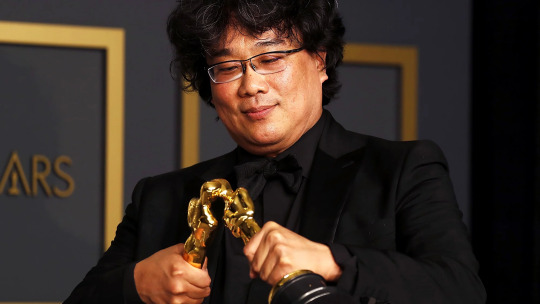
2) Billie Eilish’s rendition of Yesterday (I wish this was an actual recorded track so I could play it over and over)
youtube
3) When Eminem took the stage at the end of a montage to perform “Lose Yourself” and my phone exploded with all these messages of “ Whaaat is happening???” LOL! Believe me friends, I was as confused as you were.
youtube
Aaand, that’s a wrap on awards season! Looking forward to a new year and new decade in film!
2 notes
·
View notes
Text

Today, Live, the fruition of a long-held visualization. Years ago, J David Farrell sent me Wild Bird. I became obsessed with Wendy Waldman. Wendy's songs have garnered a Grammy nomination, she's written multiple platinum-selling hits, has recorded a ton of her own music, as well as written and produced a wealth of music across genres.
Wendy co-wrote the iconic Vanessa Williams hit, Save the Best for Last, with songwriters Phil Galdston and John Lind, which was a #1 record that garnered a Grammy nomination as well ASCAP's Song of the Year. The same team had a worldwide hit with Vanessa Williams’ follow-up, The Sweetest Days, as well as the Aaron Neville hit, I Owe You One. Wendy also received the Wrangler Award from the Cowboy Hall of Fame for her song, Corn, Water and Wood, co-written with Carol Elliot and recorded by Michael Martin Murphey.
Wendy's father, Fred Steiner, was a composer who wrote, among other things, the Perry Mason theme. He also composed the music for episodes of Star Trek, Gunsmoke, Rocky and Bullwinkle, and The Twilight Zone. Wendy's grandfather, George Steiner, wrote music for the original Laurel and Hardy and animated features such as Betty Boop. It's in her DNA.
Wendy's first album, Love Has Got Me, was released in 1973, it was proclaimed by Rolling Stone to be the singer-songwriter debut of the year. She was the youngest member of the Warner Bros. brain trust - a group of artists who were known for their innovative approaches to music. The pack included Maria Muldaur, Randy Newman, Ry Cooder, Captain Beefheart, and Van Dyke Parks. Wendy toured extensively throughout the U.S. in the 70s, headlining her own shows as well as opening for artists such as Al Stewart and Linda Ronstadt.
Moving to Nashville in the early 1980s - Wendy wrote numerous hit songs, toured with country artists, and participated in record production and television work. There were some seventy-plus Wendy Waldman songs recorded during this period, including the multi-platinum Nitty Gritty Dirt Band classic “Fishin’ In The Dark” (which Wendy co-wrote with Jim Photoglo) and several other hit singles and BMI Million-Air award winners. Wendy began producing for other artists, one of her earliest productions is the now-classic Suzy Bogguss album Somewhere Between, which won the Academy of Country Music's New Artist Award in 1989.
In 2007, Wendy released My Time In The Desert, her first album of solo material since 1987’s Letters Home. The LP featured her own versions of Save the Best For Last and Fishin in the Dark, as well as the hit, You Plant Your Fields. Following the release of the long-awaited Desert, Wendy formed The Refugees with Cidney Billens ( a great new friend of mine), and Deborah Holland. With nineteen solo albums and multiple Grammy nominations between them, the multi-faceted trio burst onto the Americana scene with their rocking country-folk sound, releasing two critically-acclaimed albums (with more on the way) and touring the U.S. consistently.
A partial list of Wendy’s credits as a record producer includes projects for John Cowan (New Grass Revival, Doobie Brothers); Karla Bonoff; Bryndle; The Refugees; Deborah Holland; The Forester Sisters; Matraca Berg; The Ozark Mountain Daredevils; Jonathan Edwards; Sweden’s Elisabeth Andreasson; The Sweethearts of the Rodeo; Ronny Cox; the final album from acoustic guitar genius Artie Traum; and Polish music superstar Mietek Szczesniak. In addition to her production work, Wendy writes and composes music for television and film. Her songs have been placed in numerous hit shows and movies.
Wendy’s studio has been the home of the venerated KFPK folk music show, Folk Scene. Wendy is also a member the legendary HB Barnum’s Life Choir, with whom she and Mietek Szczesniak collaborated with on the 2020 single “There’s Water For You.” The collective is working together on material for a full length album.
Wendy is currently working on her next solo LP. So far, she has released five singles from the anticipated forthcoming project. The album’s single, The Train Is Leaving, is my latest obsession.
I've been chasing Wendy for years on The Facebook. So looking forward to this sit-down at last, and, with luck, we'll get to hear a couple of her spectacular tunes live.
Wendy Waldman Live on Game Changers with Vicki Abelson
Wed, 9/15/21, 5 pm PT, 8 pm ET
Streaming Live on my Facebook
http://bit.ly/2y47ZCi
WeekdayDaily by Toni Vincent & @peter_and_paul_ Cartoons
0 notes
Text
Thoughts on Terminus and the MSF
Okay, so if you haven't read my Morgan/Beth/Terminus post yet, go read it HERE. I just think that keeping Morgan and Zeke entanglements in mind might help give what I say here more depth.
***Also, I will be revealing some spoilers here. They're not script spoilers but rather location spoilers. So not super-specific. Still, if you don't like spoilers, stop reading now.***

I know others have posted metas about the MSF, specifically about how it's going to be 88 minutes long. Let me start by seconding what they've all said and reiterating that there's no way that's an accident. As someone who has done a lot of both writer's editing and video editing, you can make something any length you want. You can cut it down or beef it up and somehow get it to the time you're shooting for. When TWD has longer-than-normal episodes, it's because the content trumps the time limit, and the show gets special permission from AMC to have a longer episode. We've seen them do this MANY times in the past few seasons. So what it boils down to is that Gimple can make an episode pretty much any length he wants and AMC will back him.
So could this be a coincidence? Sure, but no. Nothing will convince me that episode 8x08 being 88 minutes long is accidental. Why not an even 90? And how many 8s have we found re-watching the past few seasons? Um...about a billion? Yeah.
I suppose I ought to officially throw out there that I kinda doubt we’ll Beth before the MSF now. You all know I was super-hoping for 8x04 to be the one. Now that it wasn’t, I’m kinda not thinking we’ll see her until 8x08. Arguments could be made for 8x06 (to line up with 6x06) and 8x07 (because that’s when Glenn was revealed alive in S6) but overall, I’m kinda thinking MSF now. Obviously I would be happy to be wrong, but I won’t be holding my breath for these next two episodes.
So some time ago, the spoiler site posted this pic:

It's quite obviously Terminus. Although it's blocked, the brick front is the same. Even the foliage looks identical. Here are some pics for comparison:

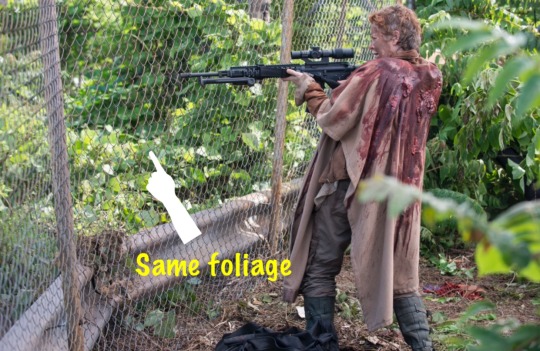
And could they be using this location to film, but it will be some other place in the show? It's possible and we have to acknowledge that, but I REALLY doubt it. Think of it this way. Every so often, the show will tell us (usually on TTD) that a location was used that has been used before. I remember in 8x02, they talked about a location in the woods being close to where Dale hid the guns from Shane in S2. That's an awesome little factoid, but everything in those scenes looked so much the same (and also so different) that we'd have never known that if they hadn't told us.
Terminus is VERY visually recognizable. I don't see the show using the exact same brick building and trying to call it something else. The fans would all take one look and go, "yeah, nice try. That's Terminus." And from this picture, they don't seem to have changed much about it. So I'm thinking this is actually supposed to be Terminus.

Also, the same week this was posted, Daniel Newman, who plays a Kingdom solider, posted on his IG instastory about filming at Terminus. His words. (Sorry, while people in my group saw the story, no one thought to save it, and those things disappear after 24 hours, so I don't have it for proof.)
Then there's the fact that it's...Terminus. All the buildup around it had most people (yours truly included) believing that Terminus would be a big deal in S5. That maybe they'd even spend a lot of the season there. Obviously that wasn't the case. It was there and gone in two episodes. Kind of weird given all the buildup to it. Many of us have predicted that Terminus would eventually be relevant again and that Beth will probably pass through there at some point (X). Even though those are just theories, them filming at Terminus again definitely catches our eyes.
Then there's all the stuff I talked about on Wednesday, with the weirdness of Morgan around Terminus, and the fact that we saw train tracks near Ezekiel in 8x04. Let's talk about that for a second.
In S4, they established very heavily through the maps and signs that all train tracks led to Terminus. It was the termination point, or convergence of all the paths/train tracks, right? We're starting to think that was a much more important symbolism than anyone, even TD, realized.
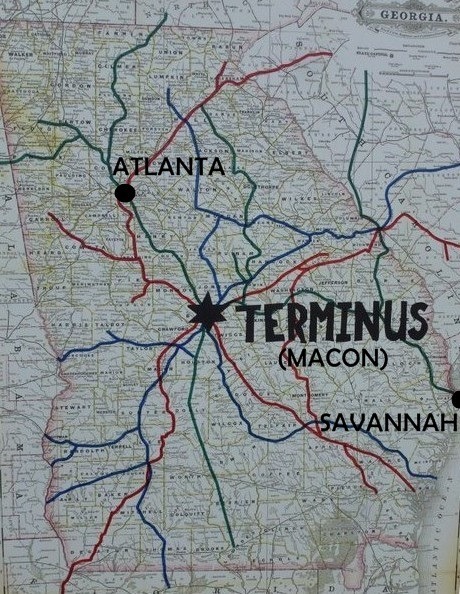
We're thinking that a lot more happened at Terminus than we saw, and all paths will eventually lead back there. I'll come back to that, but here we are seeing train tracks in S8. That alone I might point to as a foreshadow of the story heading back to Terminus soon.
But remember what I said on Wednesday: that a juxtaposition is being set up between Morgan as the weak character, and Ezekiel as the meek or emotionally strong one. Well, here, we see very obviously that Zeke, Carol, and Jerry do NOT follow the tracks. They cross them. And who's the only other character who crossed over the tracks rather than following them to Terminus?
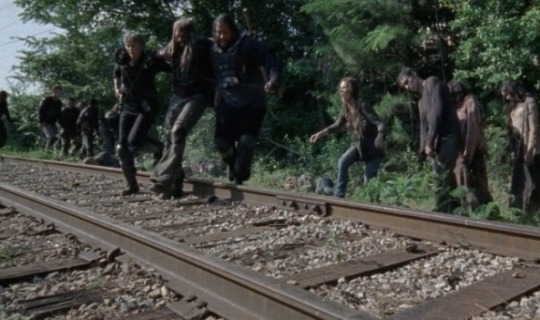
Beth.
So Ezekiel is being paralleled with Beth here. (Clarification: Daryl did cross the tracks with Beth at first, but he later followed them with Rick and Michonne to Terminus, so she remains the only one in S4 who NEVER followed the tracks into Terminus.)
Also remember that there were a lot of A’s around Terminus. First the train car, then Gareth painted one on FG's church. If A= Atlanta, well, Terminus isn't far from Atlanta. All the A’s could point back to stuff that happened in Atlanta that we've haven't seen yet. And as we said in these two posts (X, X), Beth would have to pass through the Terminus area to get to the coast, and we still think she'll probably come up the coast and through Oceanside.
@thegloriouscollectorlady had some interesting thoughts about this. She pointed out that while Beth wasn't at Terminus, when RIck and Daryl arrived, the others were. Glenn and Maggie's group came into Terminus very peacefully. Obviously it didn't stay that way, as they ended up in the A car too, but they didn't show us what happened with them. Just told us later. So maybe Rick and Daryl's stories are the ones most connected to Terminus.
And that's interesting given what happened in last week's episode. We're just seeing more and more stuff come full circle from 4x16. In 4x16, entitled A, Rick and Daryl became brothers.
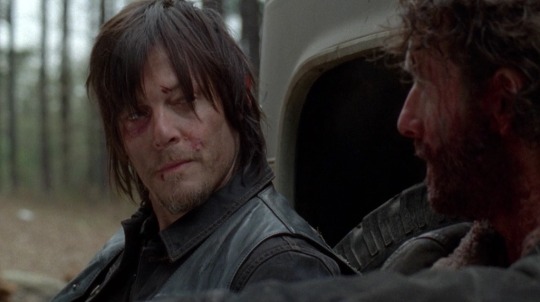
Now we're seeing the first real rift between them since then.

In 4x16, they entered Terminus. Now, for S8, they seem to have filmed stuff at the Terminus location again. In 4x16, the sheriff's hat fell off Carl and was put on Beth, proclaiming her the new sheriff in town. In 8x08, who knows? But do you see how the narrative is coming full circle?
I've also always thought the weirdness of Sasha probably started at Terminus. (Sasha/Tyreese Theory) That's mostly because of her weirdo convo with Father Gabriel in 5x16. He mentions the Termites and that Bob was consumed because of Sasha's sins, which makes no sense whatsoever based on what we saw in S5. So I've always thought there was more that happened at Terminus, specifically concerning Sasha, that we didn't see. I have no idea what it was, but it was something that contributed to her guilt and that FG seemed to want to use to blame Bob's death on her. Still no explanation for that convo in 5x16.

And why do I think Terminus might show up in 8x08 specifically? Well, I don't think we know for sure that this filming at the Terminus location was specifically for the MSF. And it wouldn't really matter anyway, because they've already told us they filmed things out of sequence for S8, and were often working on multiple episodes at once. So there's no way to pin down which episode it was for.
However, let's return to Crazy Tattoo Guy. Remember him? Two things that make me think we might be returning to Terminus in the MSF.

First, there was a dialogue parallel to him between Rick and Morales in 8x03. I posted this edit: Exact same wording, but opposite words. Once again, we've come 180 degrees from where we were. Mirror theory.
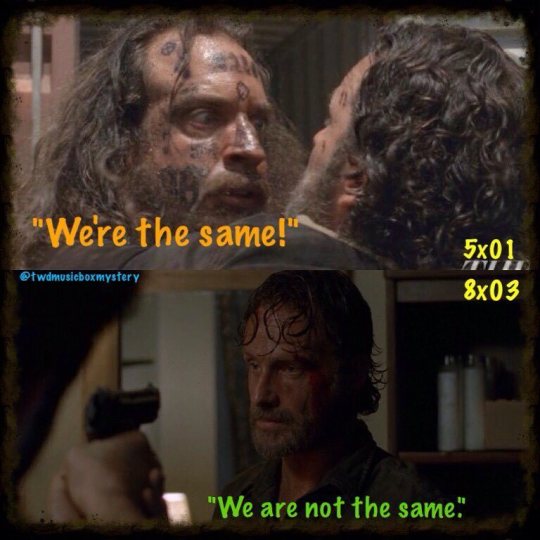
Check out this guy's face: He has an 88 tattooed there. And yes, I know 88 can mean lots of things. It can mean nazi, which is fitting given what he was doing to the Termites. But what if it also means that in 8x08 (which is 88 minutes long) we'll finally understand what the hell was going on with Terminus?
Remember that Gimple said Crazy Tattoo Guy was connected to bigger group of baddies, who I believe to be the saviors. (Source) So there is definitely some back story/connections there that have yet to be revealed in the show.
In that same interview (linked above) Gimple also said there was “a lot to that character.” Really? Because we saw him torturing the Termites, then be let out of the C train car by Glenn, then die. How is that “a lot to that character?” It’s obvious to me that they’re planning to return to him and explain more.
It’s yet another loose end from S5 that Gimple promised would be explained, but still hasn’t been. And per what we’ve been shown in the show, this one has little directly to do with Beth. (Only TD believes otherwise.)
Even if you look up the dictionary definition of the word Terminus, things are kind of interesting:
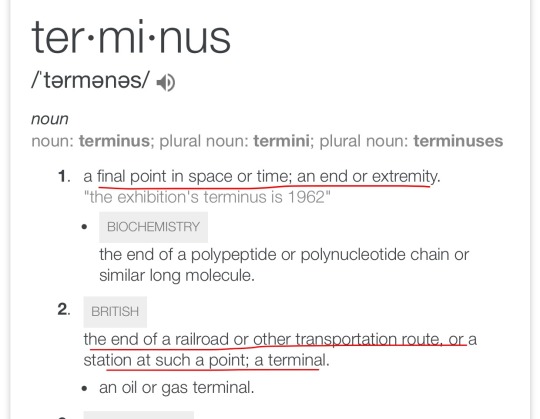
Notice how it mentions time. What if Gimple always meant to go back to Terminus. What if it’s the termination point for this crazy time arc that started in S4/S5? I don’t mean that in a negative, she’s-gonna-die-there way. But all tracks lead to Terminus, right?
We also learned this past episode that before Negan took over leadership of the Saviors, they were a band of wild animals, more or less. And we know because of Morales that they roved down into the Georgia area. So it’s very possible that Crazy Tattoo guy and those with him were a part of the Saviors, but that was before Negan took over.
And because there were defunct cop cars at Terminus, many of us believe there are connections between Grady and Terminus. And then there's the fact that the red car seen at Terminus was also spotted in front of the white cabin Emily filmed at in S5, which scenes we have yet to see.
See how it all works together?
So there's no way to tell if we're interpreting the details correctly. It may not play out exactly as I've laid out here. (Probably won't, in fact.) But we have a lot of loose ends that need to be tied (and per Morales', we know Gimple always ties up his loose ends) plus some evidence that we might be revisiting Terminus sometime soon.
Now we just gotta sit back and watch how it all plays out.

Oh, one more great point by @thegloriouscollectorlady: they're doing this Red Machete story now, right? (X, X). The red machete had it's significance in TWD because of Gareth and Terminus. Now they're calling their mini episodes that. Coincidence? Just saying. ;D
#beth greene#beth greene lives#beth is alive#beth is coming#beth is almost here#td theory#td theories#team delusional#team defiance
23 notes
·
View notes
Text
Star of BAFTA Awards Became "1917"!
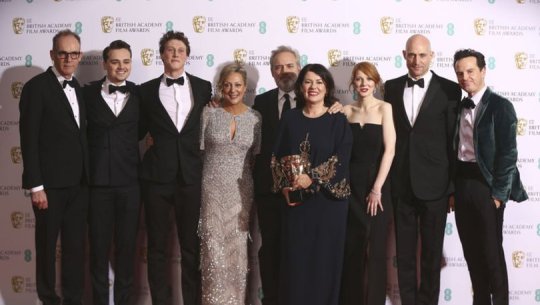
BAFTA Awards found their proprietors. BAFTA Awards, known as The British Academy, are perceived as the most significant honor given before the Oscar Awards. The film that left its imprint this year was Sam Mendes' marked 1917, which was granted in 7 classes. Additionally among the remarkable figures of the service are Bridget Jones stars Renee Zellweger and Hugh Grant, who appeared to meet numerous years after the fact; Al Pacino, which stands apart with the fall of honorary pathway; Joaquin Phoenix intrigues with his honor discourse. Here are the victors of BAFTA … Best Picture: 1917 - Winner The irishman Joker Sometime in the distant past… In Hollywood Parasite Best British Film: 1917 - Winner Snare For Sama Rocketman Sorry We Missed You The Two Popes Best First Film from British Screenwriter, Director or Producer: Snare, Mark Jenkin, Kate Byers, Linn Waite - Winner For Sama, Waad Al-Kateab, Edward Watts Lady, Alex Holmes Just You, Harry Wootliff Retablo, Álvaro Delgado-Aparicio Best Foreign Language Film: The Farewell For Sama Torment And Glory Parasite - Winner Picture Of A Lady On Fire Narrative: American processing plant Apollo 11 Diego Maradona For Sama - Winner The Great Hack Movement: Solidified 2 Klaus - Winner A Shaun The Sheep Movie: Farmageddon Toy Story 4 Executive: 1917, Sam Mendes - Winner The Irishman, Martin Scorsese Joker, Todd Phillips Sometime in the distant past… In Hollywood, Quentin Tarantino Parasite, Bong Joon-Ho Unique Scenario: Booksmart, Susanna Fogel, Emily Halpern, Sarah Haskins, Katie Silberman Blades Out, Rian Johnson Marriage Story, Noah Baumbach Sometime in the distant past… In Hollywood, Quentin Tarantino Parasite, Han Jin Won, Bong Joon-Ho - Winner Best Adapted Screenplay: The Irishman, Steven Zaillian Jojo Rabbit, Taika Waititi - Winner Joker, Todd Phillips, Scott Silver Little Women, Greta Gerwig The Two Popes, Anthony Mccarten Best Actress: Jessie Buckley, Wild Rose Scarlett Johansson, Marriage Story Saoirse Ronan, Little Women Charlize Theron, Bombshell Renée Zellweger, Judy - Winner The best entertainer: Leonardo Dicaprio, Once Upon A Time… In Hollywood Adam Driver, Marriage Story Taron Egerton, Rocketman Joaquin Phoenix, Joker - Winner Jonathan Pryce, The Two Popes Best Supporting Actress: Laura Dern, Marriage Story - Winner Scarlett Johansson, Jojo Rabbit Florence Pugh, Little Women Margot Robbie, Bombshell Margot Robbie, Once Upon A Time… In Hollywood Best Supporting Actor: Tom Hanks, A Beautiful Day In The Neighborhood Anthony Hopkins, The Two Popes Al Pacino, The Irishman Joe Pesci, The Irishman Brad Pitt, Once Upon A Time… In Hollywood - Brad Pitt Unique Music: 1917, Thomas Newman Jojo Rabbit, Michael Giacchino The Joker is Hildur Guđnadót - Winner Little Women, Alexandre Desplat Star Wars: The Rise Of Skywalker, John Williams Best Cinematographer: 1917, Roger Deakins - Winner The Irishman, Rodrigo Prieto Joker Lawr, Ence Sher Le Mans '66, Phedon Papamichael The Lighthouse, Jarin Blaschke Fiction The Irishman, Thelma Schoonmaker Jojo Rabbit, Tom Eagles Joker, Jeff Groth Le Mans '66, Andrew Buckland, Michael Mccusker - Winner Sometime in the distant past… In Hollywood, Fred Raskin Creation Design: 1917 Dennis Gassner, Lee Sandales - Winner The Irishman Bob Shaw, Regina Graves Jojo Rabbit Ra Vincent, Nora Sopková Joker Mark Friedberg, Kris Moran Sometime in the distant past… In Hollywood Barbara Ling, Nancy Haigh Ensemble Design: The Irishman, Christopher Peterson, Sandy Powell Jojo Rabbit, Mayes C. Rubeo Judy, Jany Temime Little Women, Jacqueline Durran - Winner Sometime in the distant past… In Hollywood, Arianne Phillips Cosmetics and Hair: 1917, Naomi Donne Stunner, Vivian Baker, Kazu Hiro, Anne Morgan - Winner Joker, Kay Georgiou, Nicki Ledermann Judy, Jeremy Woodhead Rocketman, Lizzie Yianni Georgiou Sound Design: 1917, Scott Millan, Oliver Tarney, Rachael Tate, Mark Taylor, Stuart Wilson - Winner Joker, Tod Maitland, Alan Robert Murray, Tom Ozanich, Dean Zupancic Le Mans '66, David Giammarco, Paul Massey, Steven A. Morrow, Donald Sylvester Rocketman, Matthew Collinge, John Hayes, Mike Prestwood Smith, Danny Sheehan Star Wars: The Rise Of Skywalker, David Acord, Andy Nelson, Christopher Scarabosio, Stuart Wilson, Matthew Wood Enhanced visualizations: 1917, Greg Butler, Guillaume Rocheron, Dominic Tuohy - Winner Vindicators: Endgame, Dan Deleeuw, Dan Sudick The Irishman, Leandro Estebecorena, Stephane Grabli, Pablo Helman The Lion King, Andrew R. Jones, Robert Legato, Elliot Newman, Adam Valdez Star Wars: The Rise Of Skywalker, Roger Guyett, Paul Kavanagh, Neal Scanlan, Dominic Tuohy Best British Short Animated Film Grandad Was A Romantic. Maryam Mohajer - Winner In Her Boots Kathrin Steinbacher The Magic Boat Naaman Azhari, Lilia Laurel Best British Short Film: Azaar Myriam Raja, Nathanael Baring Goldfish Hector Dockrill, Harri Kamalanathan, Benedict Turnbull, Laura Dockrill Kamali Sasha Rainbow, Rosalind Croad Figuring out how To Skateboard In A Warzone (If You're A Girl) Carol Dysinger, Elena Andreicheva - Winner The Trap Lena Headey, Anthony Fitzgerald Rising Star Award: Awkwaf to Jack lowden Kaitlyn Dever Kelvin Harrison Jr. Micheal Ward - Winner Read the full article
0 notes
Text
Bong Joon-ho's PARASITE Has a Badass Night at The Oscars and Makes History; Here's The Full List of Winners
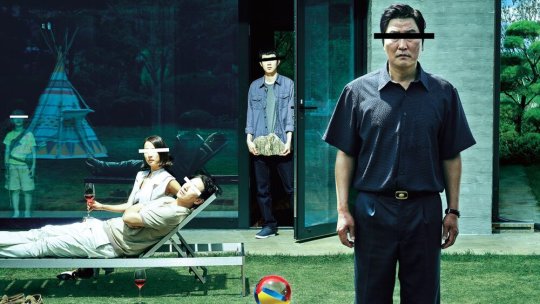
Director Bong Joon-ho’s Parasite was one of my favorite films of the year. I saw the movie multiple times in theaters. Every time someone would tell me they hadn’t seen it yet, I would drag them to the theater to watch it and they would leave walk out of the movie in awe.
Parasite had one hell of a great night at the Oscars as it took home four awards including Best Picture, Best Director, Best Original Screenplay, and Best International Feature Film. This is the first South Korean film to be nominated, and the first time a film has won awards for Best Picture and Best International Film. I couldn’t be happier to see this film make Oscar history! All the awards it won were completely deserved.
While I don’t really care about watching the Oscars these days, and I’m not really a fan of this hostless thing they have going. But, I’m such a big fan of South Korean cinema, and it was really great to see such a brilliant film like Parasite be recognized the way it was.
Most every other win at the Oscars was pretty predictable, but I was honestly shocked by what Parasite accomplished! I did not see this coming, so it was a great surprise that made watching the Oscars worth it.
Here is the full list of nominees and winners. Looks them over and let us know what you thought about how everything turned out.
Best motion picture of the year nominees:
FORD V FERRARI
Peter Chernin, Jenno Topping and James Mangold, Producers
THE IRISHMAN
Martin Scorsese, Robert De Niro, Jane Rosenthal and Emma Tillinger Koskoff, Producers
JOJO RABBIT
Carthew Neal, Taika Waititi and Chelsea Winstanley, Producers
JOKER
Todd Phillips, Bradley Cooper and Emma Tillinger Koskoff, Producers
LITTLE WOMEN
Amy Pascal, Producer
MARRIAGE STORY
Noah Baumbach and David Heyman, Producers
1917
Sam Mendes, Pippa Harris, Jayne-Ann Tenggren and Callum McDougall, Producers
ONCE UPON A TIME...IN HOLLYWOOD
David Heyman, Shannon McIntosh and Quentin Tarantino, Producers
PARASITE - WINNER
Kwak Sin Ae and Bong Joon Ho, Producers
Original screenplay nominees:
KNIVES OUT
Written by Rian Johnson
MARRIAGE STORY
Written by Noah Baumbach
1917
Written by Sam Mendes & Krysty Wilson-Cairns
ONCE UPON A TIME...IN HOLLYWOOD
Written by Quentin Tarantino
PARASITE - WINNER
Screenplay by Bong Joon Ho, Han Jin Won
Story by Bong Joon Ho
Adapted screenplay nominees:
THE IRISHMAN
Screenplay by Steven Zaillian
JOJO RABBIT - WINNER
Screenplay by Taika Waititi
JOKER
Written by Todd Phillips & Scott Silver
LITTLE WOMEN
Written for the screen by Greta Gerwig
THE TWO POPES
Written by Anthony McCarten
Best international feature film of the year nominees:
CORPUS CHRISTI
Poland
Directed by Jan Komasa
HONEYLAND
North Macedonia
Directed by Ljubo Stefanov and Tamara Kotevska
LES MISÉRABLES
France
Directed by Ladj Ly
PAIN AND GLORY
Spain
Directed by Pedro Almodóvar
PARASITE - WINNER
South Korea
Directed by Bong Joon Ho
Performance by an actor in a leading role nominees:
Antonio Banderas in PAIN AND GLORY
Leonardo DiCaprio in ONCE UPON A TIME...IN HOLLYWOOD
Adam Driver in MARRIAGE STORY
Joaquin Phoenix in JOKER - WINNER
Jonathan Pryce in THE TWO POPES
Performance by an actor in a supporting role nominees:
Tom Hanks in A BEAUTIFUL DAY IN THE NEIGHBORHOOD
Anthony Hopkins in THE TWO POPES
Al Pacino in THE IRISHMAN
Joe Pesci in THE IRISHMAN
Brad Pitt in ONCE UPON A TIME...IN HOLLYWOOD - WINNER
Performance by an actress in a leading role nominees:
Cynthia Erivo in HARRIET
Scarlett Johansson in MARRIAGE STORY
Saoirse Ronan in LITTLE WOMEN
Charlize Theron in BOMBSHELL
Renée Zellweger in JUDY - WINNER
Performance by an actress in a supporting role nominees:
Kathy Bates in RICHARD JEWELL
Laura Dern in MARRIAGE STORY - WINNER
Scarlett Johansson in JOJO RABBIT
Florence Pugh in LITTLE WOMEN
Margot Robbie in BOMBSHELL
Best animated feature film of the year nominees:
HOW TO TRAIN YOUR DRAGON: THE HIDDEN WORLD
Dean DeBlois, Bradford Lewis and Bonnie Arnold
I LOST MY BODY
Jérémy Clapin and Marc du Pontavice
KLAUS
Sergio Pablos, Jinko Gotoh and Marisa Román
MISSING LINK
Chris Butler, Arianne Sutner and Travis Knight
TOY STORY 4 - WINNER
Josh Cooley, Mark Nielsen and Jonas Rivera
Achievement in cinematography nominees:
THE IRISHMAN
Rodrigo Prieto
JOKER
Lawrence Sher
THE LIGHTHOUSE
Jarin Blaschke
1917 - WINNER
Roger Deakins
ONCE UPON A TIME...IN HOLLYWOOD
Robert Richardson
Achievement in costume design nominees:
THE IRISHMAN
Sandy Powell and Christopher Peterson
JOJO RABBIT
Mayes C. Rubeo
JOKER
Mark Bridges
LITTLE WOMEN - WINNER
Jacqueline Durran
ONCE UPON A TIME...IN HOLLYWOOD
Arianne Phillips
Achievement in directing nominees:
THE IRISHMAN
Martin Scorsese
JOKER
Todd Phillips
1917
Sam Mendes
ONCE UPON A TIME...IN HOLLYWOOD
Quentin Tarantino
PARASITE - WINNER
Bong Joon Ho
Best documentary feature nominees:
AMERICAN FACTORY - WINNER
Steven Bognar, Julia Reichert and Jeff Reichert
THE CAVE
Feras Fayyad, Kirstine Barfod and Sigrid Dyekjær
THE EDGE OF DEMOCRACY
Petra Costa, Joanna Natasegara, Shane Boris and Tiago Pavan
FOR SAMA
Waad al-Kateab and Edward Watts
HONEYLAND
Ljubo Stefanov, Tamara Kotevska and Atanas Georgiev
Best documentary short subject nominees:
IN THE ABSENCE
Yi Seung-Jun and Gary Byung-Seok Kam
LEARNING TO SKATEBOARD IN A WARZONE (IF YOU’RE A GIRL) - WINNER
Carol Dysinger and Elena Andreicheva
LIFE OVERTAKES ME
John Haptas and Kristine Samuelson
ST. LOUIS SUPERMAN
Smriti Mundhra and Sami Khan
WALK RUN CHA-CHA
Laura Nix and Colette Sandstedt
Achievement in film editing nominees:
FORD V FERRARI - WINNER
Michael McCusker and Andrew Buckland
THE IRISHMAN
Thelma Schoonmaker
JOJO RABBIT
Tom Eagles
JOKER
Jeff Groth
PARASITE
Yang Jinmo
Achievement in makeup and hairstyling nominees:
BOMBSHELL - WINNER
Kazu Hiro, Anne Morgan and Vivian Baker
JOKER
Nicki Ledermann and Kay Georgiou
JUDY
Jeremy Woodhead
MALEFICENT: MISTRESS OF EVIL
Paul Gooch, Arjen Tuiten and David White
1917
Naomi Donne, Tristan Versluis and Rebecca Cole
Achievement in music written for motion pictures (Original score) nominees:
JOKER - WINNER
Hildur Guðnadóttir
LITTLE WOMEN
Alexandre Desplat
MARRIAGE STORY
Randy Newman
1917
Thomas Newman
STAR WARS: THE RISE OF SKYWALKER
John Williams
Achievement in music written for motion pictures (Original song) nominees:
"I Can't Let You Throw Yourself Away" from TOY STORY 4
Music and Lyric by Randy Newman
"(I'm Gonna) Love Me Again" from ROCKETMAN - WINNER
Music by Elton John
Lyric by Bernie Taupin
"I'm Standing With You" from BREAKTHROUGH
Music and Lyric by Diane Warren
"Into The Unknown" from FROZEN II
Music and Lyric by Kristen Anderson-Lopez and Robert Lopez
"Stand Up" from HARRIET
Music and Lyric by Joshuah Brian Campbell and Cynthia Erivo
Achievement in production design nominees:
THE IRISHMAN
Production Design: Bob Shaw
Set Decoration: Regina Graves
JOJO RABBIT
Production Design: Ra Vincent
Set Decoration: Nora Sopková
1917
Production Design: Dennis Gassner
Set Decoration: Lee Sandales
ONCE UPON A TIME...IN HOLLYWOOD - WINNER
Production Design: Barbara Ling
Set Decoration: Nancy Haigh
PARASITE
Production Design: Lee Ha Jun
Set Decoration: Cho Won Woo
Best animated short film nominees:
DCERA (DAUGHTER)
Daria Kashcheeva
HAIR LOVE - WINNER
Matthew A. Cherry and Karen Rupert Toliver
KITBULL
Rosana Sullivan and Kathryn Hendrickson
MEMORABLE
Bruno Collet and Jean-François Le Corre
SISTER
Siqi Song
Best live action short film nominees:
BROTHERHOOD
Meryam Joobeur and Maria Gracia Turgeon
NEFTA FOOTBALL CLUB
Yves Piat and Damien Megherbi
THE NEIGHBORS’ WINDOW - WINNER
Marshall Curry
SARIA
Bryan Buckley and Matt Lefebvre
A SISTER
Delphine Girard
Achievement in sound editing nominees:
FORD V FERRARI - WINNER
Donald Sylvester
JOKER
Alan Robert Murray
1917
Oliver Tarney and Rachael Tate
ONCE UPON A TIME...IN HOLLYWOOD
Wylie Stateman
STAR WARS: THE RISE OF SKYWALKER
Matthew Wood and David Acord
Achievement in sound mixing nominees:
AD ASTRA
Gary Rydstrom, Tom Johnson and Mark Ulano
FORD V FERRARI
Paul Massey, David Giammarco and Steven A. Morrow
JOKER
Tom Ozanich, Dean Zupancic and Tod Maitland
1917 - WINNER
Mark Taylor and Stuart Wilson
ONCE UPON A TIME...IN HOLLYWOOD
Michael Minkler, Christian P. Minkler and Mark Ulano
Achievement in visual effects nominees:
AVENGERS: ENDGAME
Dan DeLeeuw, Russell Earl, Matt Aitken and Dan Sudick
THE IRISHMAN
Pablo Helman, Leandro Estebecorena, Nelson Sepulveda-Fauser and Stephane Grabli
THE LION KING
Robert Legato, Adam Valdez, Andrew R. Jones and Elliot Newman
1917 - WINNER
Guillaume Rocheron, Greg Butler and Dominic Tuohy
STAR WARS: THE RISE OF SKYWALKER
Roger Guyett, Neal Scanlan, Patrick Tubach and Dominic Tuohy
source https://geektyrant.com/news/bong-joon-hos-parasite-has-a-badass-night-at-the-oscars-and-makes-history-heres-the-full-list-of-winner
1 note
·
View note
Text
youtube
In case you missed it, here’s the full list of 2020 Oscar nominations, with Joker in the lead (11 noms):
Best Picture:
“Ford v Ferrari”
“The Irishman”
“Jojo Rabbit”
“Joker”
“Little Women”
“Marriage Story”
“1917”
“Once Upon a Time in Hollywood”
“Parasite”
Lead Actor:
Antonio Banderas, “Pain and Glory”
Leonardo DiCaprio, “Once Upon a Time in Hollywood”
Adam Driver, “Marriage Story”
Joaquin Phoenix, “Joker”
Jonathan Pryce, “The Two Popes”
Lead Actress:
Cynthia Erivo, “Harriet”
Scarlett Johansson, “Marriage Story”
Saoirse Ronan, “Little Women”
Charlize Theron, “Bombshell”
Renee Zellweger, “Judy”
Supporting Actor:
Tom Hanks, “A Beautiful Day in the Neighborhood”
Anthony Hopkins, “The Two Popes”
Al Pacino, “The Irishman”
Joe Pesci, “The Irishman”
Brad Pitt, “Once Upon a Time in Hollywood”
Supporting Actress:
Kathy Bates, “Richard Jewell”
Laura Dern, “Marriage Story”
Scarlett Johansson, “Jojo Rabbit”
Florence Pugh, “Little Women”
Margot Robbie, “Bombshell”
Director:
Martin Scorsese, “The Irishman”
Todd Phillips, “Joker”
Sam Mendes, “1917”
Quentin Tarantino, “Once Upon a Time in Hollywood”
Bong Joon Ho, “Parasite”
Animated Feature:
“How to Train Your Dragon: The Hidden World,” Dean DeBlois
“I Lost My Body,” Jeremy Clapin
“Klaus,” Sergio Pablos
“Missing Link,” Chris Butler
“Toy Story 4,” Josh Cooley
Animated Short:
“Dcera,” Daria Kashcheeva
“Hair Love,” Matthew A. Cherry
“Kitbull,” Rosana Sullivan
“Memorable,” Bruno Collet
“Sister,” Siqi Song
Adapted Screenplay:
“The Irishman,” Steven Zaillian
“Jojo Rabbit,” Taika Waititi
“Joker,” Todd Phillips, Scott Silver
“Little Women,” Greta Gerwig
“The Two Popes,” Anthony McCarten
Original Screenplay:
“Knives Out,” Rian Johnson
“Marriage Story,” Noah Baumbach
“1917,” Sam Mendes and Krysty Wilson-Cairns
“Once Upon a Time in Hollywood,” Quentin Tarantino
“Parasite,” Bong Joon-ho, Jin Won Han
Cinematography:
“The Irishman,” Rodrigo Prieto
“Joker,” Lawrence Sher
“The Lighthouse,” Jarin Blaschke
“1917,” Roger Deakins
“Once Upon a Time in Hollywood,” Robert Richardson
FULL List of the Academy Award Nominations
Best Documentary Feature:
“American Factory,” Julia Rieichert, Steven Bognar
“The Cave,” Feras Fayyad
“The Edge of Democracy,” Petra Costa
“For Sama,” Waad Al-Kateab, Edward Watts
“Honeyland,” Tamara Kotevska, Ljubo Stefanov
Best Documentary Short Subject:
“In the Absence,” Yi Seung-Jun and Gary Byung-Seok Kam
“Learning to Skateboard in a Warzone,” Carol Dysinger
“Life Overtakes Me,” Kristine Samuelson and John Haptas
“St. Louis Superman,” Smriti Mundhra and Sami Khan
“Walk Run Cha-Cha,” Laura Nix
Best Live Action Short Film:
“Brotherhood,” Meryam Joobeur
“Nefta Football Club,” Yves Piat
“The Neighbors’ Window,” Marshall Curry
“Saria,” Bryan Buckley
“A Sister,” Delphine Girard
Best International Feature Film:
“Corpus Christi,” Jan Komasa
“Honeyland,” Tamara Kotevska, Ljubo Stefanov
“Les Miserables,” Ladj Ly
“Pain and Glory,” Pedro Almodovar
“Parasite,” Bong Joon Ho
Film Editing:
“Ford v Ferrari,” Michael McCusker, Andrew Buckland
“The Irishman,” Thelma Schoonmaker
“Jojo Rabbit,” Tom Eagles
“Joker,” Jeff Groth
“Parasite,” Jinmo Yang
Sound Editing:
“Ford v Ferrari,” Don Sylvester
“Joker,” Alan Robert Murray
“1917,” Oliver Tarney, Rachel Tate
“Once Upon a Time in Hollywood,” Wylie Stateman
“Star Wars: The Rise of SkyWalker,” Matthew Wood, David Acord
Sound Mixing:
“Ad Astra”
“Ford v Ferrari”
“Joker”
“1917”
“Once Upon a Time in Hollywood”
Production Design:
“The Irishman,” Bob Shaw and Regina Graves
“Jojo Rabbit,” Ra Vincent and Nora Sopkova
“1917,” Dennis Gassner and Lee Sandales
“Once Upon a Time in Hollywood,” Barbara Ling and Nancy Haigh
“Parasite,” Lee Ha-Jun and Cho Won Woo, Han Ga Ram, and Cho Hee
Original Score:
“Joker,” Hildur Guðnadóttir
“Little Women,” Alexandre Desplat
“Marriage Story,” Randy Newman
“1917,” Thomas Newman
“Star Wars: The Rise of Skywalker,” John Williams
Original Song:
“I Can’t Let You Throw Yourself Away,” “Toy Story 4”
“I’m Gonna Love Me Again,” “Rocketman”
“I’m Standing With You,” “Breakthrough”
“Into the Unknown,” “Frozen 2”
“Stand Up,” “Harriet”
Makeup and Hair:
“Bombshell”
“Joker”
“Judy”
“Maleficent: Mistress of Evil”
“1917”
Costume Design:
”The Irishman,” Sandy Powell, Christopher Peterson
“Jojo Rabbit,” Mayes C. Rubeo
“Joker,” Mark Bridges
“Little Women,” Jacqueline Durran
“Once Upon a Time in Hollywood,” Arianne Phillips
Visual Effects:
“Avengers Endgame”
“The Irishman”
“1917”
“The Lion King”
“Star Wars: The Rise of Skywalker
0 notes
Text
The Oscar Nominations 2020 -Joker leads with 11 Nods

The Oscar Nominations 2020 -Joker leads with 11 Nods, Black Actors & Actresses Sidelined - Cynthia Erivo is a sole nominee on the list.
Presented by the Academy of Motion Picture Arts and Sciences, the 92nd Academy Award will be a show between the old and new Hollywood. Netflix leads with 24 nominations including best picture honors for "The Irishman" and "Marriage Story". Films are taking more the Oscar attention this year, the "Joker" which portrays the DC Comics Villian is leading this category with 11 nominations including one for best picture. Sam Mendes's World War 1 epic received 10, Quentic Tarantino's "Once upon a time" received 10 and "The Irishman" as well received ten nominations (Martin Scorsese is in for his ninth nomination for best director). This year Black actors and actresses are sidelined with the British-Nigerian actress "Cynthia Erivo" being the only nominee on list. Lupita NYong's "Us" and Eddie Murphy "Dolemite is My name" greatly overlooked.
Here is the full list.
Original Song: “I Can’t Let You Throw Yourself Away,” -Toy Story 4 “I’m Gonna Love Me Again,” - Rocketman “I’m Standing With You,” - Breakthrough “Into the Unknown,” - Frozen 2 “Stand Up,” - Harriet Makeup and Hair: - Bombshell - Joker - Judy - Maleficent: Mistress of Evil - 1917 Costume Design: ”The Irishman,” - Sandy Powell, Christopher Peterson “Jojo Rabbit,” - Mayes C. Rubeo “Joker,” - Mark Bridges “Little Women,” - Jacqueline Durran “Once Upon a Time in Hollywood,” - Arianne Phillips Visual Effects: - Avengers Endgame - The Irishman - 1917 - The Lion King - Star Wars: The Rise of Sky-walker Best Picture: -Ford v Ferrari -The Irishman -Jojo Rabbit -Joker -Little Women -Marriage Story -1917 -Once Upon a Time in Hollywood. -Parasite. Lead Actor: Antonio Banderas - “Pain and Glory” Leonardo DiCaprio - “Once Upon a Time in Hollywood” Adam Driver - “Marriage Story” Joaquin Phoenix - “Joker” Jonathan Pryce - “The Two Popes” Lead Actress: Cynthia Erivo - “Harriet” Scarlett Johansson - “Marriage Story” Saoirse Ronan - “Little Women” Charlize Theron - “Bombshell” Renee Zellweger - “Judy” Supporting Actor: Tom Hanks - “A Beautiful Day in the Neighborhood” Anthony Hopkins - “The Two Popes” Al Pacino - “The Irishman” Joe Pesci - “The Irishman” Brad Pitt - “Once Upon a Time in Hollywood” Supporting Actress: Kathy Bates - “Richard Jewell” Laura Dern - “Marriage Story” Scarlett Johansson - “Jojo Rabbit” Florence Pugh - “Little Women” Margot Robbie - “Bombshell” Director: Martin Scorsese - “The Irishman” Todd Phillips - “Joker” Sam Mendes - “1917” Quentin Tarantino - “Once Upon a Time in Hollywood” Bong Joon Ho - “Parasite” Animated Feature: “How to Train Your Dragon: The Hidden World,” - Dean DeBlois “I Lost My Body,” - Jeremy Clapin “Klaus,” - Sergio Pablos “Missing Link,” - Chris Butler “Toy Story 4,” - Josh Cooley Animated Short: “Dcera,” - Daria Kashcheeva “Hair Love,” - Matthew A. Cherry “Kitbull,” - Rosana Sullivan “Memorable,” - Bruno Collet “Sister,” - Siqi Song Adapted Screenplay: “The Irishman,” - Steven Zaillian “Jojo Rabbit,” - Taika Waititi “Joker,” - Todd Phillips, Scott Silver “Little Women,” - Greta Gerwig “The Two Popes,” - Anthony McCarten Original Screenplay: “Knives Out,” - Rian Johnson “Marriage Story,” - Noah Baumbach “1917,” - Sam Mendes and Krysty Wilson-Cairns “Once Upon a Time in Hollywood,” - Quentin Tarantino “Parasite,” - Bong Joon-ho, Jin Won Han Cinematography: “The Irishman,” - Rodrigo Prieto “Joker,” - Lawrence Sher “The Lighthouse,” - Jarin Blaschke “1917,” - Roger Deakins “Once Upon a Time in Hollywood,” - Robert Richardson Best Documentary Feature: “American Factory,” - Julia Rieichert, Steven Bognar “The Cave,” - Feras Fayyad “The Edge of Democracy,” - Petra Costa “For Sama,” - Waad Al-Kateab, Edward Watts “Honeyland,” - Tamara Kotevska, Ljubo Stefanov Best Documentary Short Subject: “In the Absence,” - Yi Seung-Jun and Gary Byung-Seok Kam “Learning to Skateboard in a Warzone,” - Carol Dysinger “Life Overtakes Me,” - Kristine Samuelson and John Haptas “St. Louis Superman,” - Smriti Mundhra and Sami Khan “Walk Run Cha-Cha,” - Laura Nix Best Live Action Short Film: “Brotherhood,” - Meryam Joobeur “Nefta Football Club,” - Yves Piat “The Neighbors’ Window,” - Marshall Curry “Saria,” - Bryan Buckley “A Sister,” - Delphine Girard Best International Feature Film: “Corpus Christi,” - Jan Komasa “Honeyland,” - Tamara Kotevska, Ljubo Stefanov “Les Miserables,” - Ladj Ly “Pain and Glory,” - Pedro Almodovar “Parasite,” - Bong Joon Ho Film Editing: “Ford v Ferrari,” - Michael McCusker, Andrew Buckland “The Irishman,” - Thelma Schoonmaker “Jojo Rabbit,” - Tom Eagles “Joker,” - Jeff Groth “Parasite,” - Jinmo Yang Sound Editing: “Ford v Ferrari,” - Don Sylvester “Joker,” - Alan Robert Murray “1917,” - Oliver Tarney, Rachel Tate “Once Upon a Time in Hollywood,” - Wylie Stateman “Star Wars: The Rise of Sky-walker,” - Matthew Wood, David Acord Sound Mixing: -Ad Astra -Ford v Ferrari -Joker -1917 -Once Upon a Time in Hollywood Production Design: “The Irishman,” - Bob Shaw and Regina Graves “Jojo Rabbit,” - Ra Vincent and Nora Sopkova “1917,” - Dennis Gassner and Lee Sandales “Once Upon a Time in Hollywood,” - Barbara Ling and Nancy Haigh “Parasite,” - Lee Ha-Jun and Cho Won Woo, Han Ga Ram, and Cho Hee Original Score: “Joker,” - Hildur Guonadottir “Little Women,” - Alexandre Desplat “Marriage Story,” - Randy Newman “1917,” - Thomas Newman “Star Wars: The Rise of Skywalker,” - John Williams Read the full article
0 notes